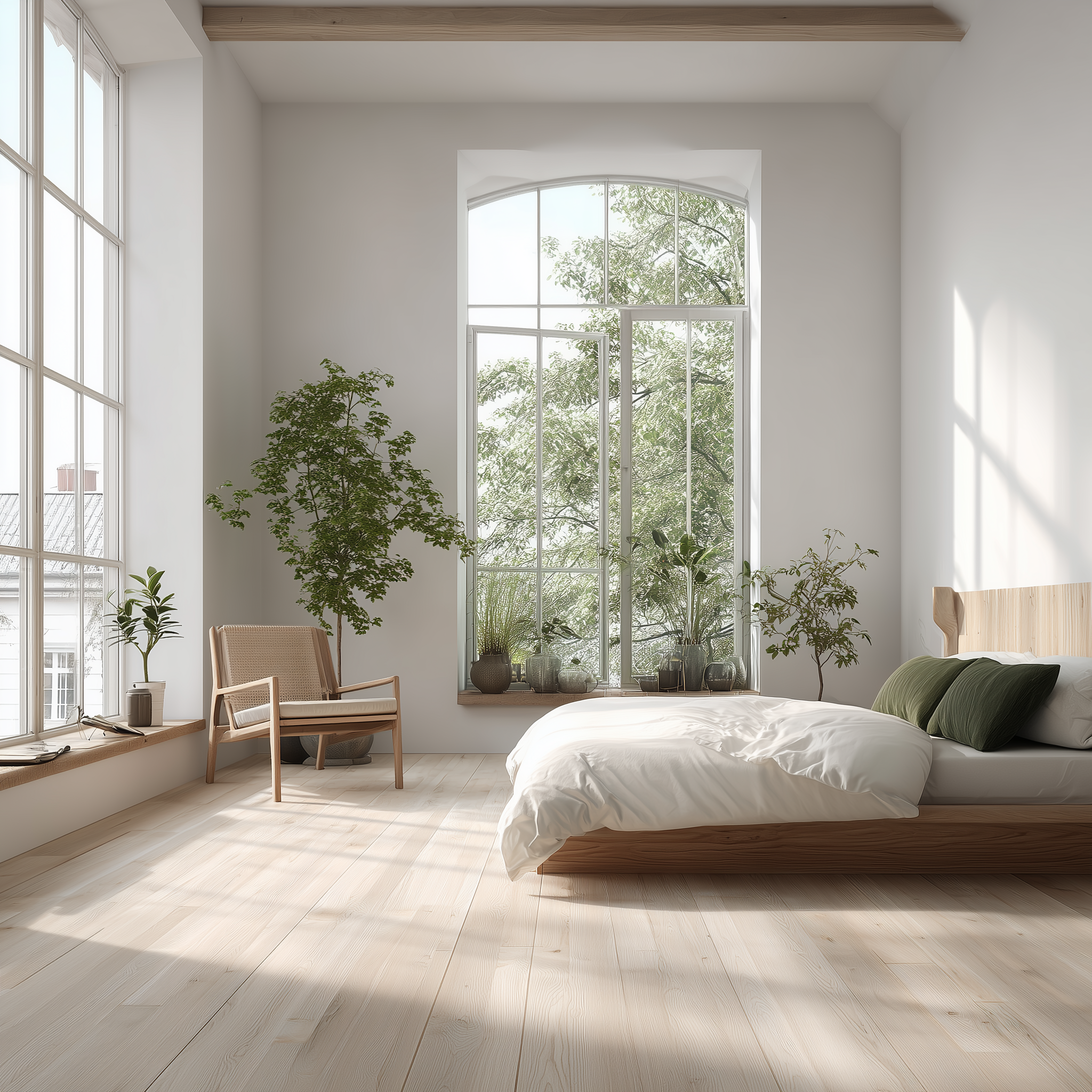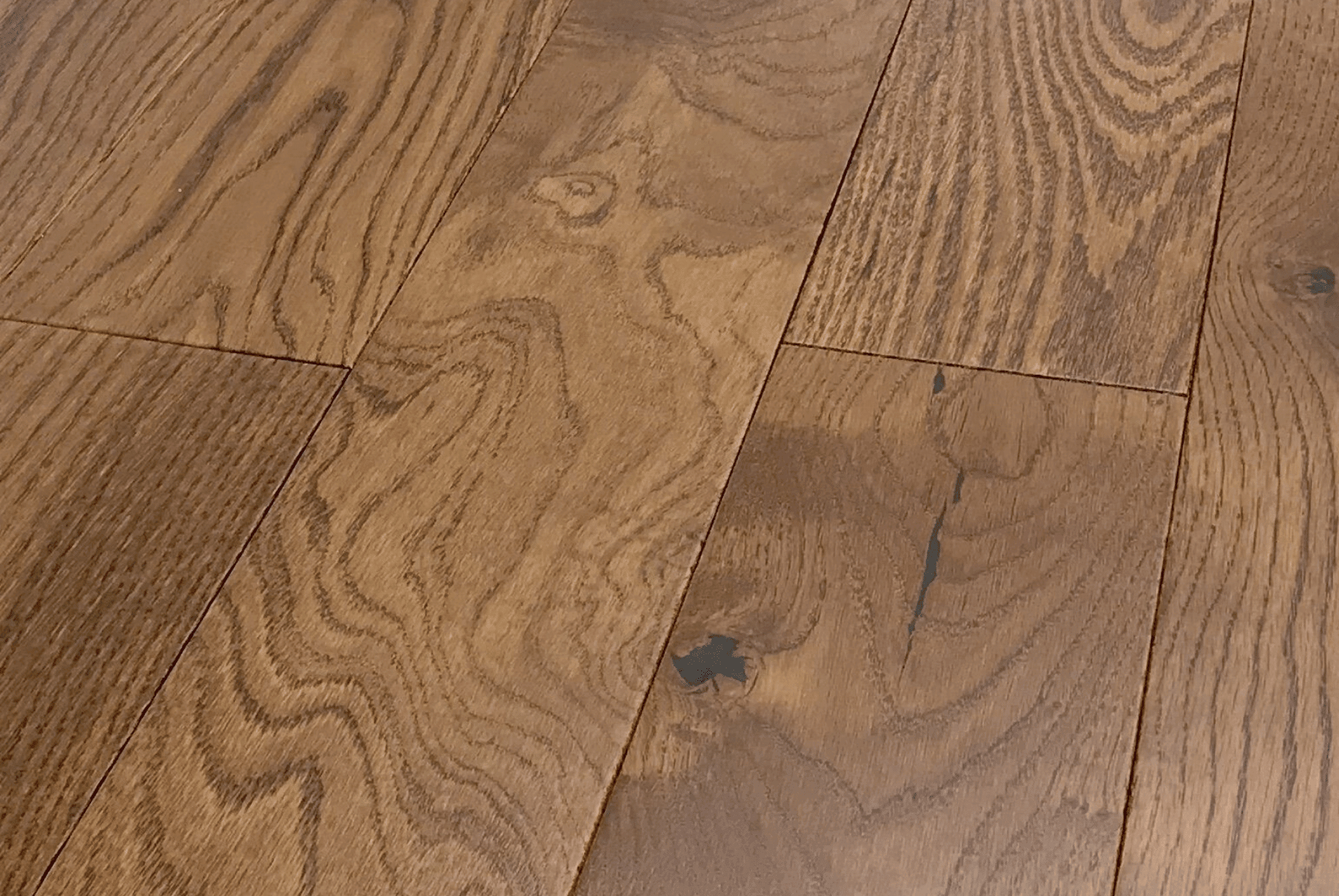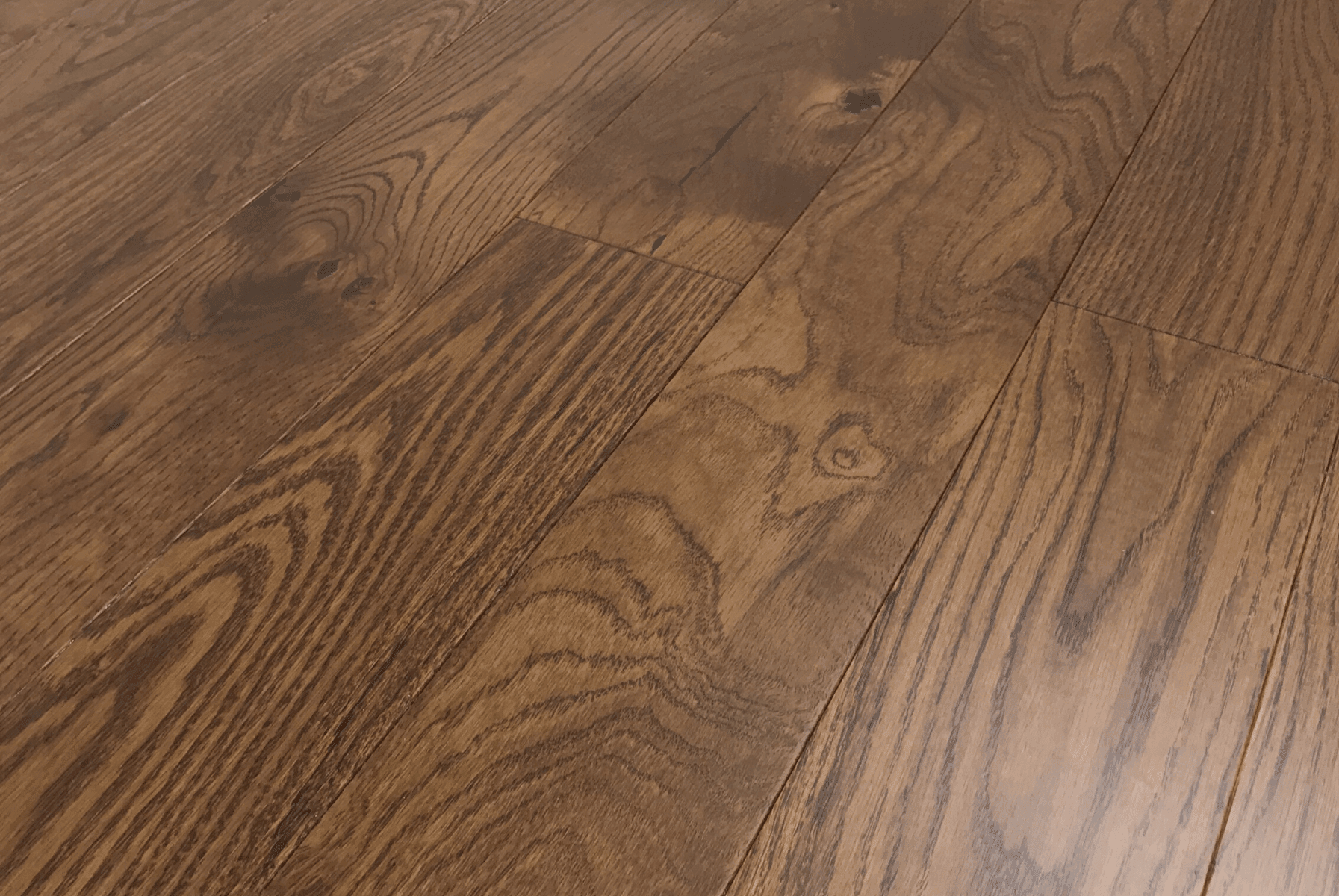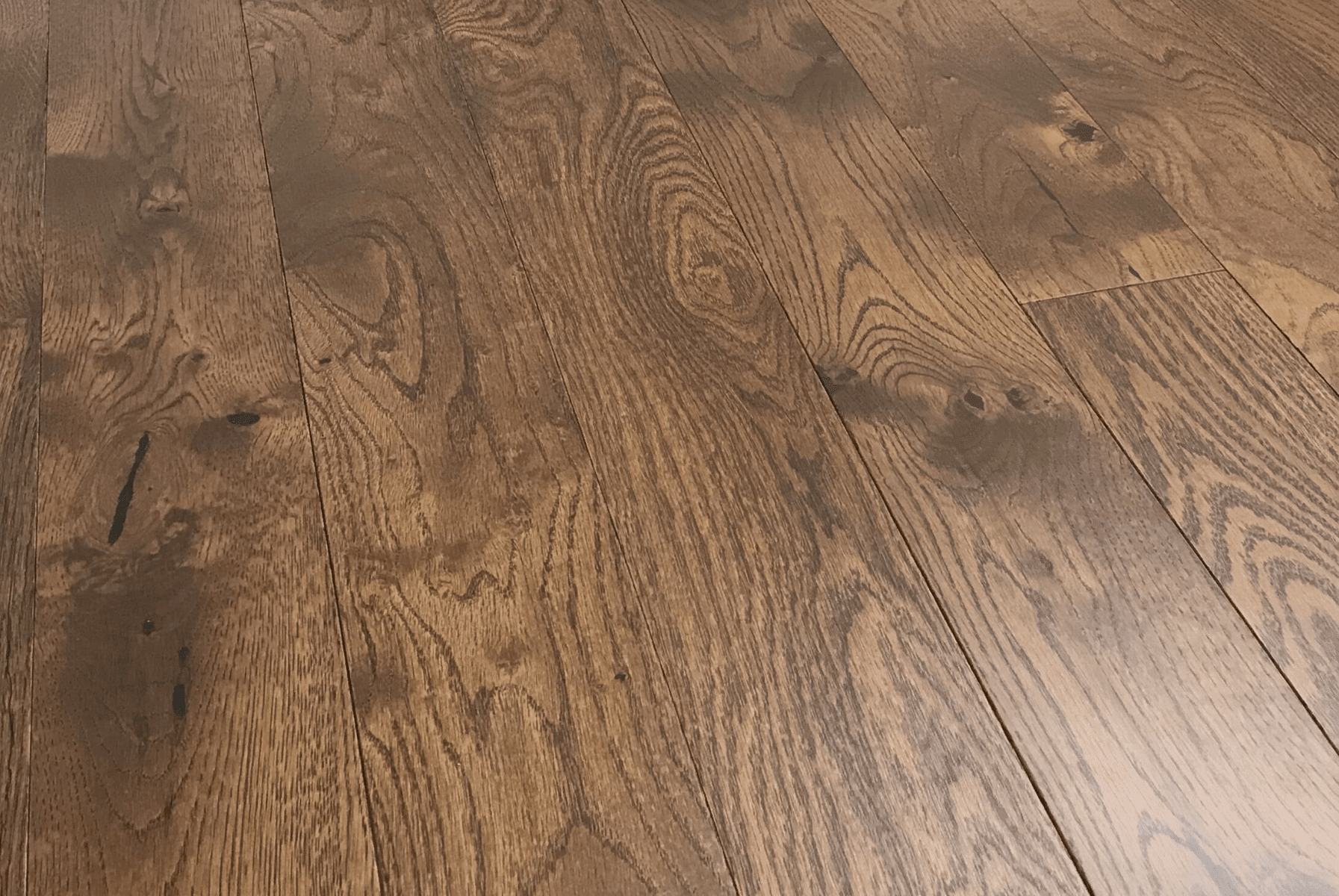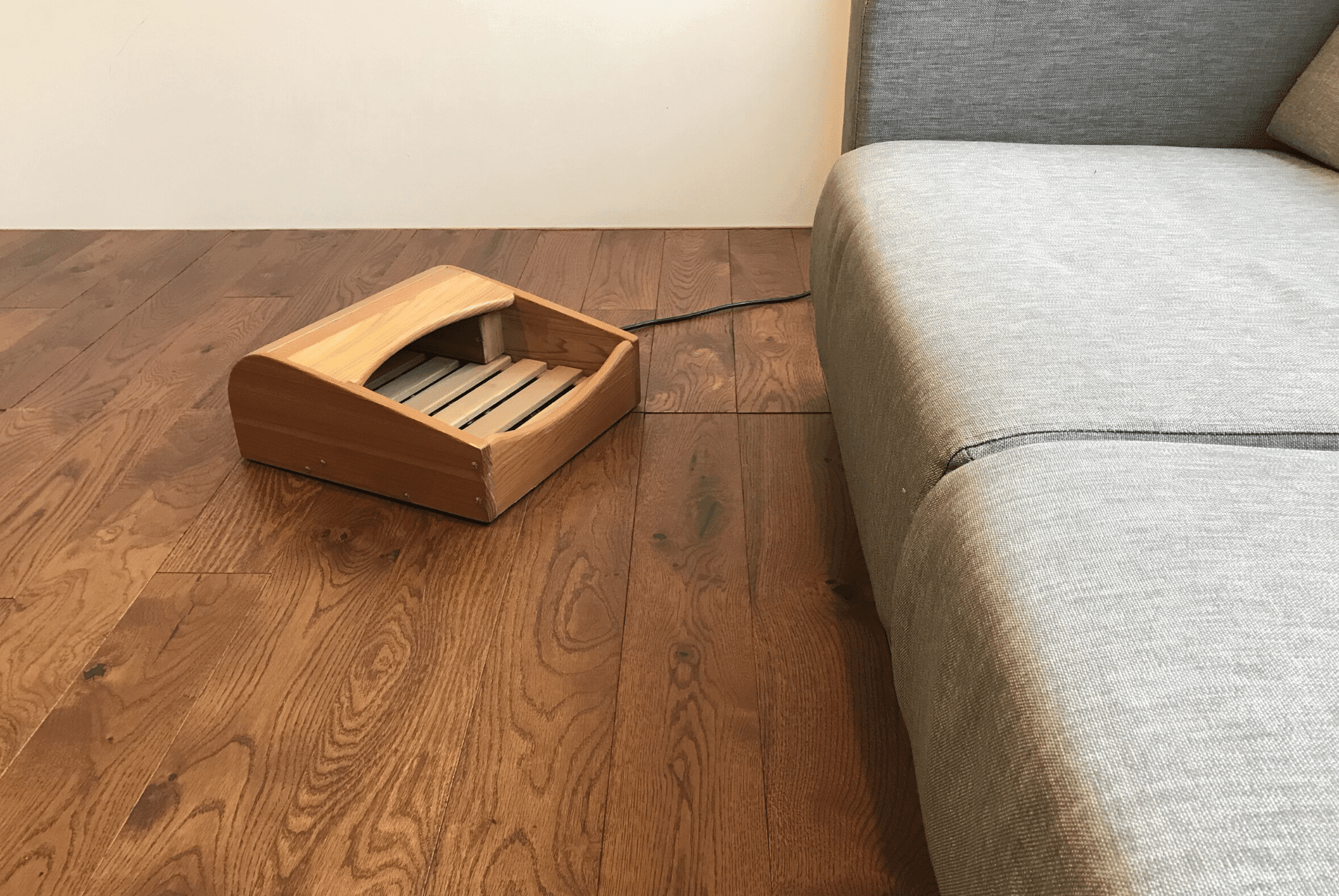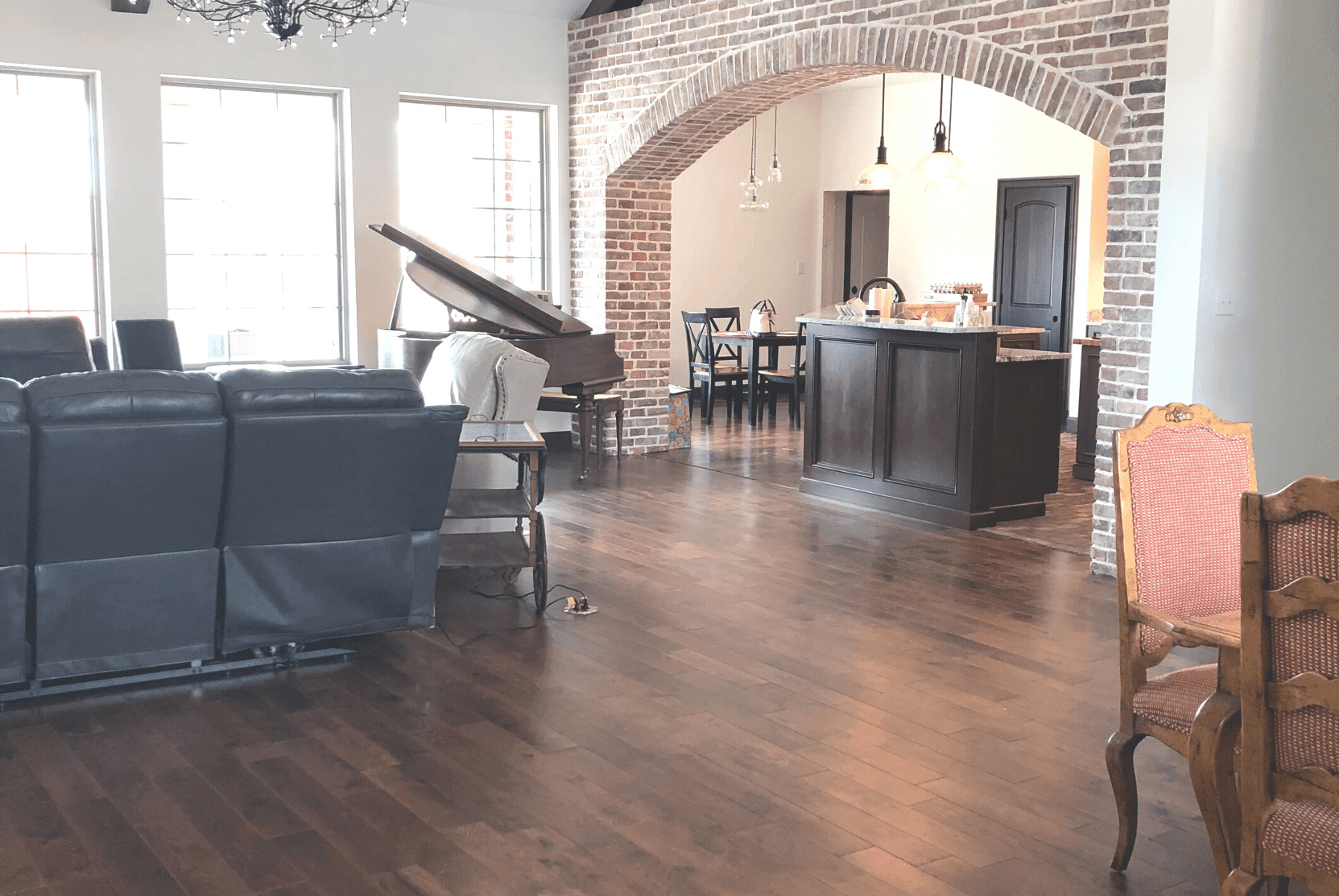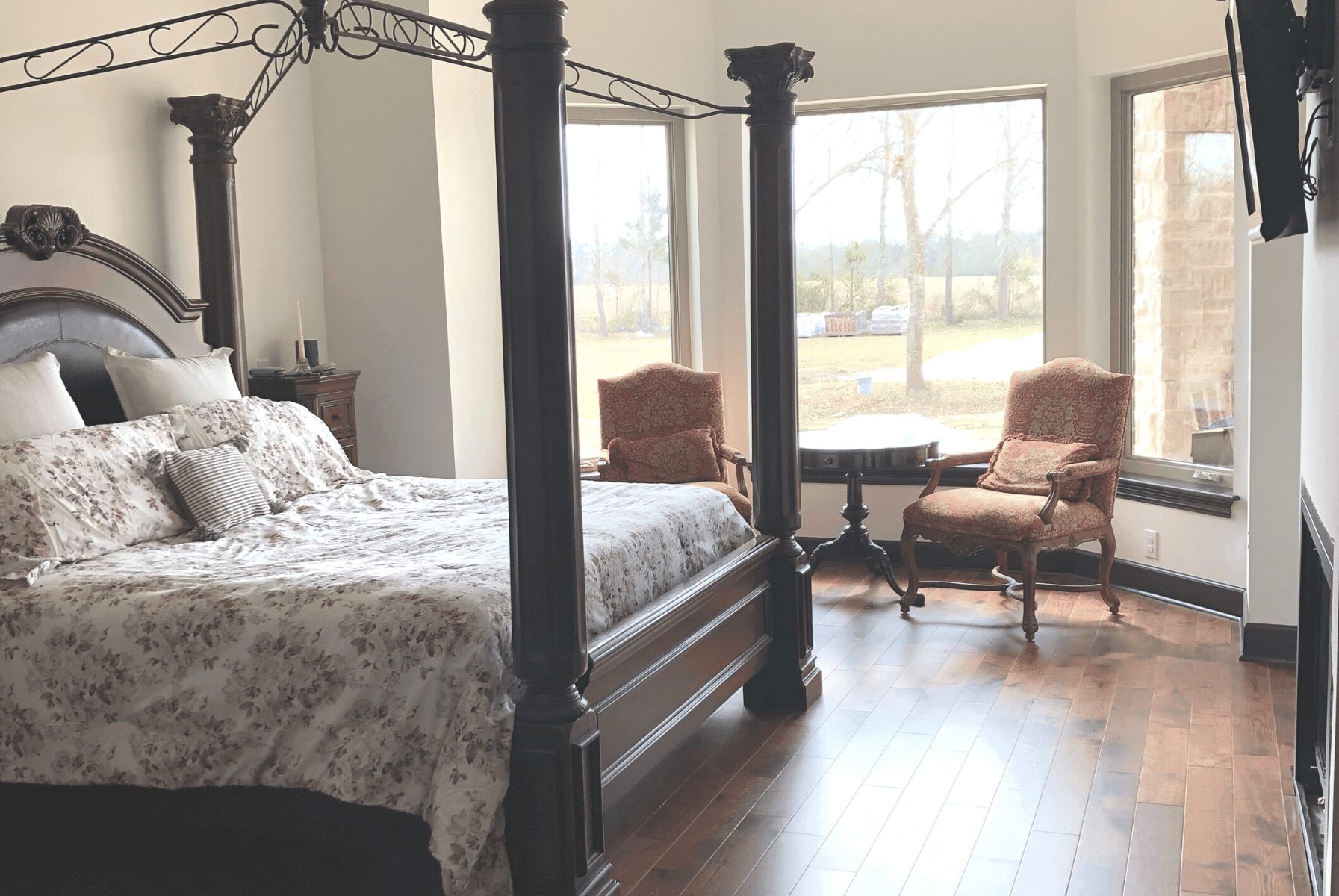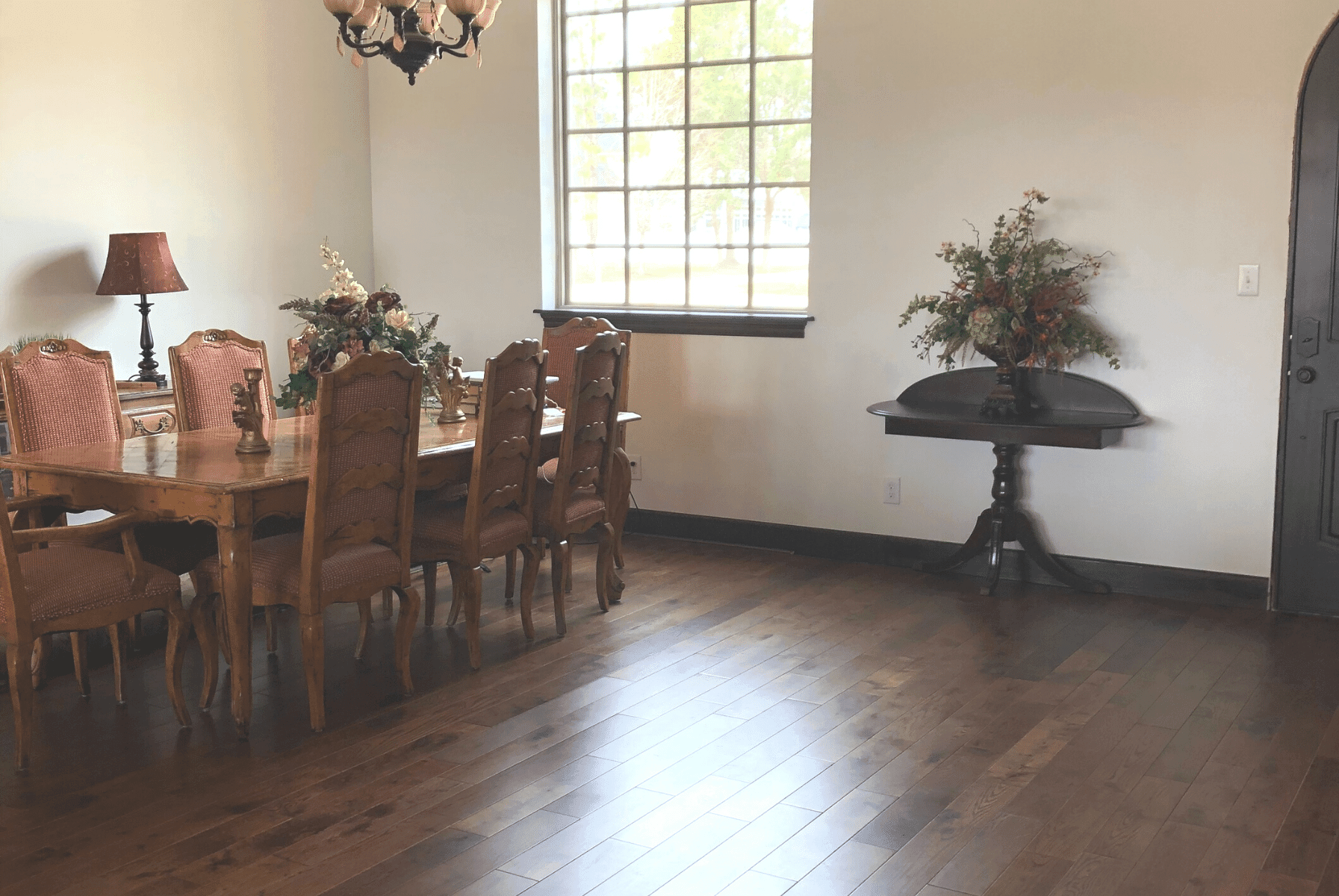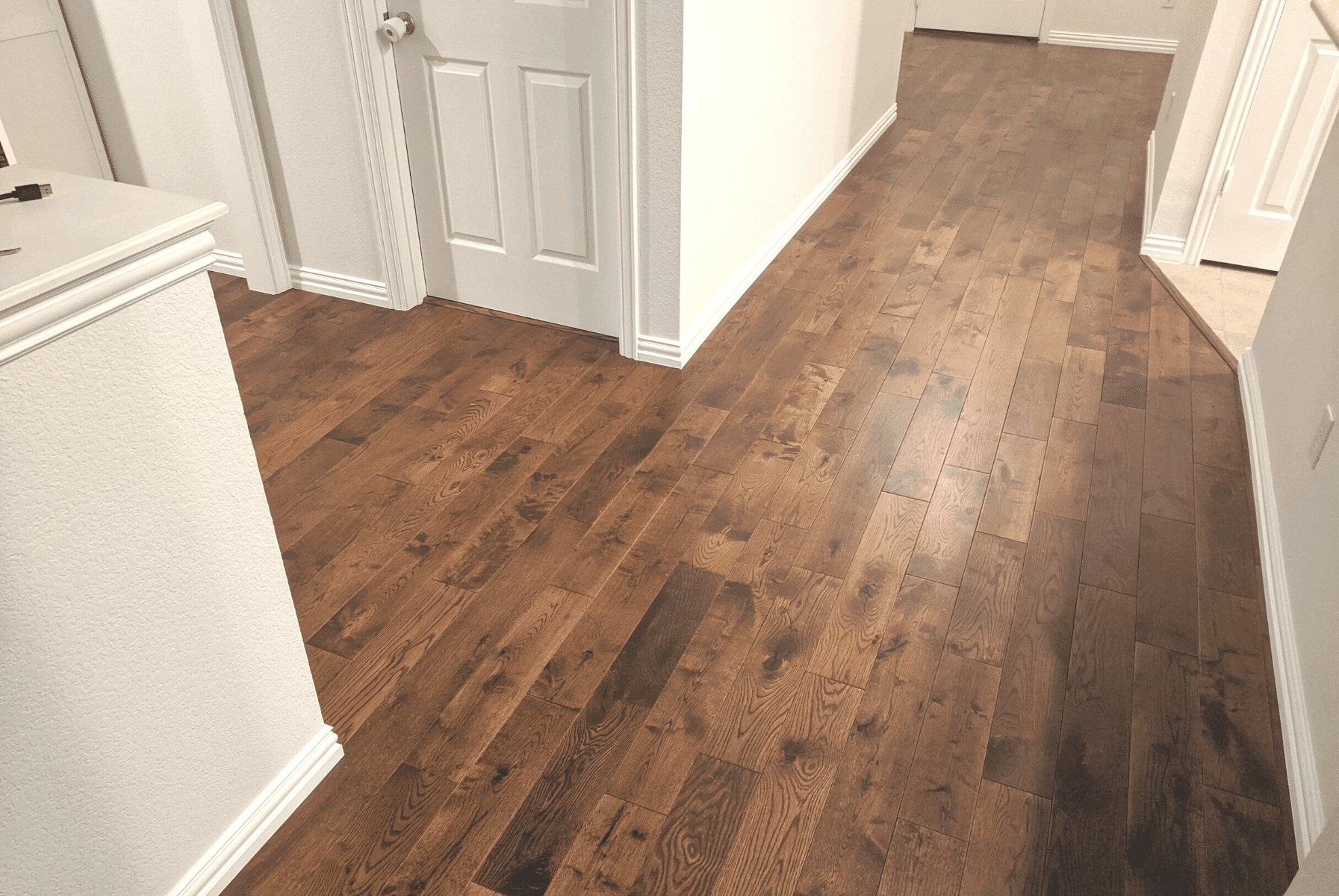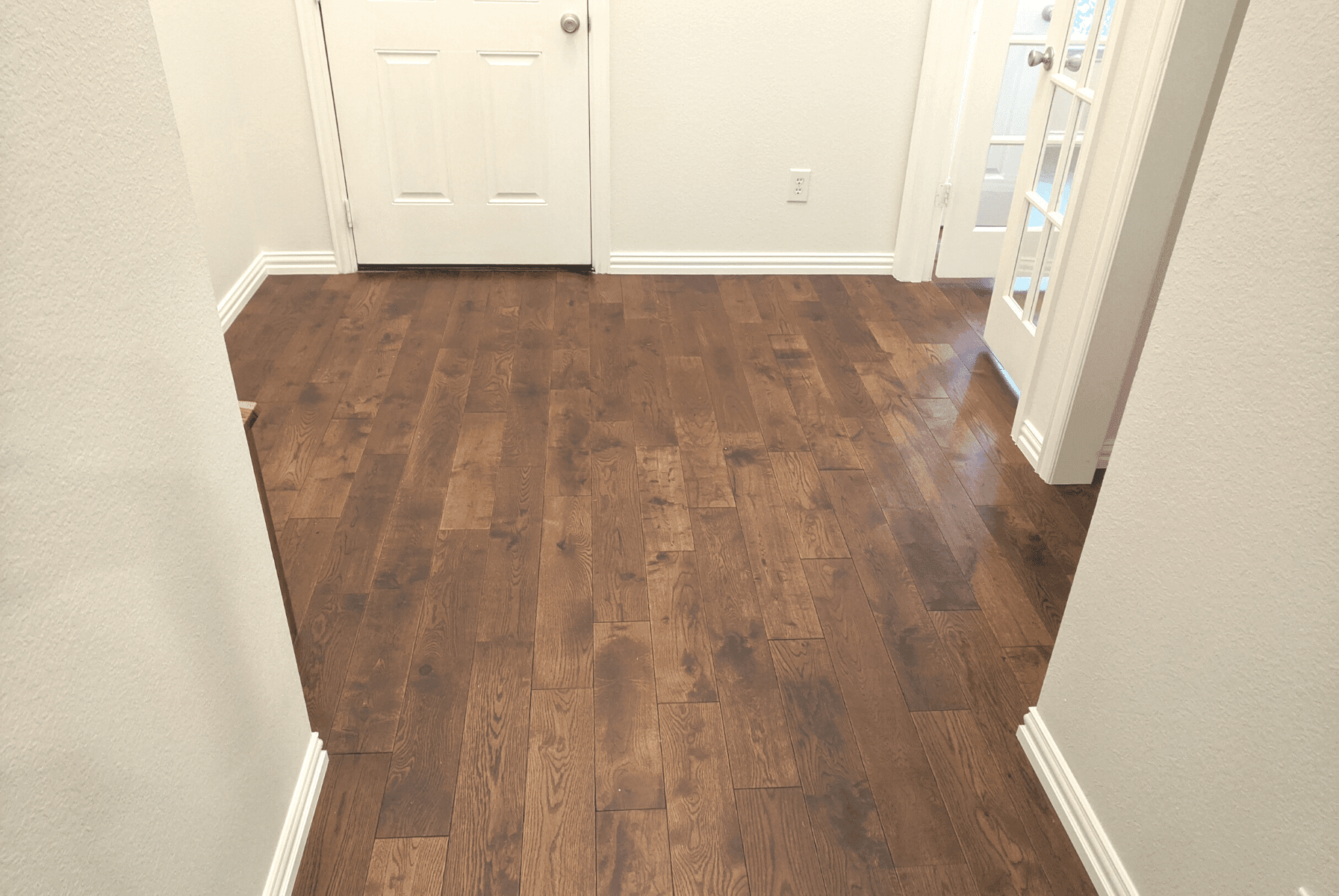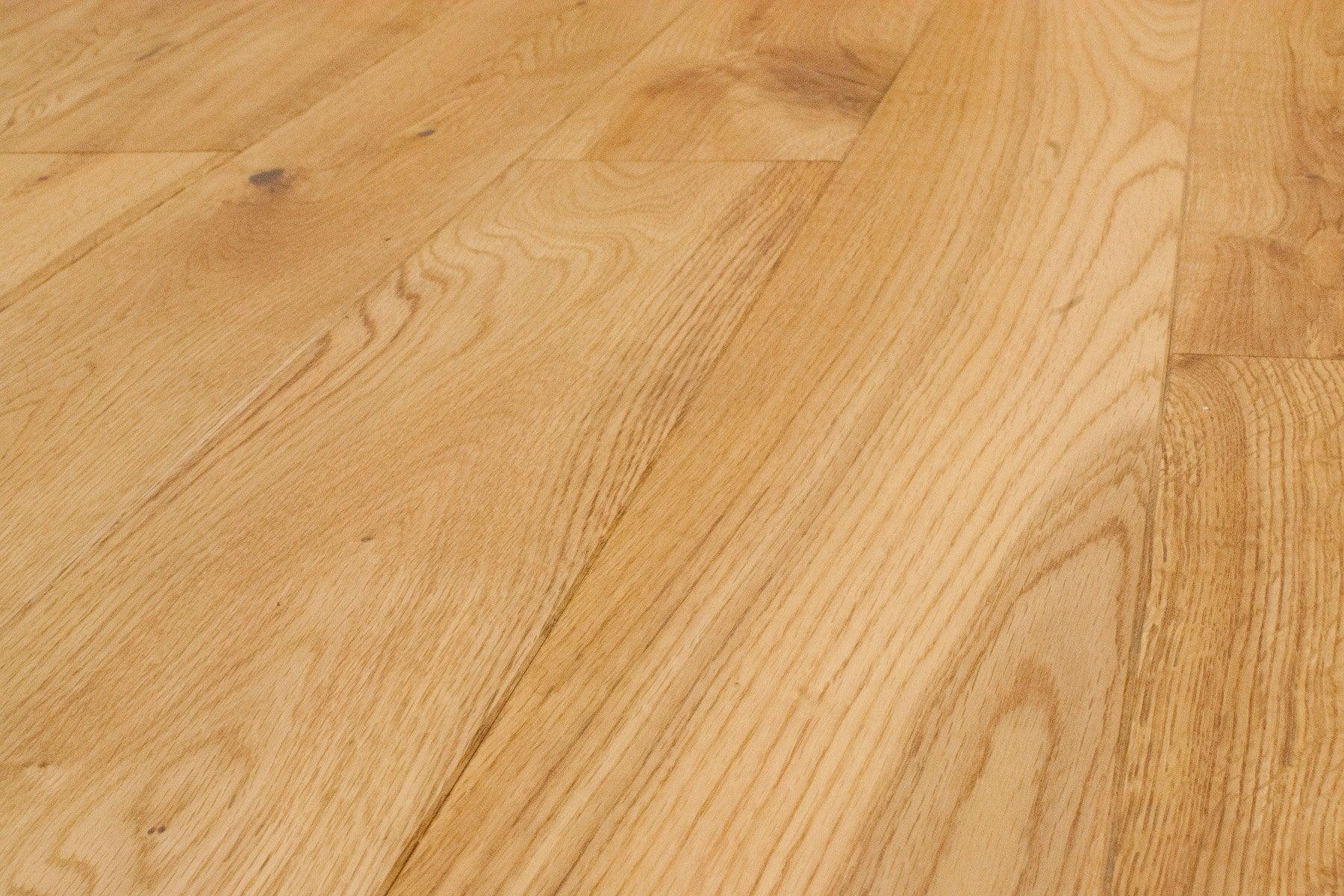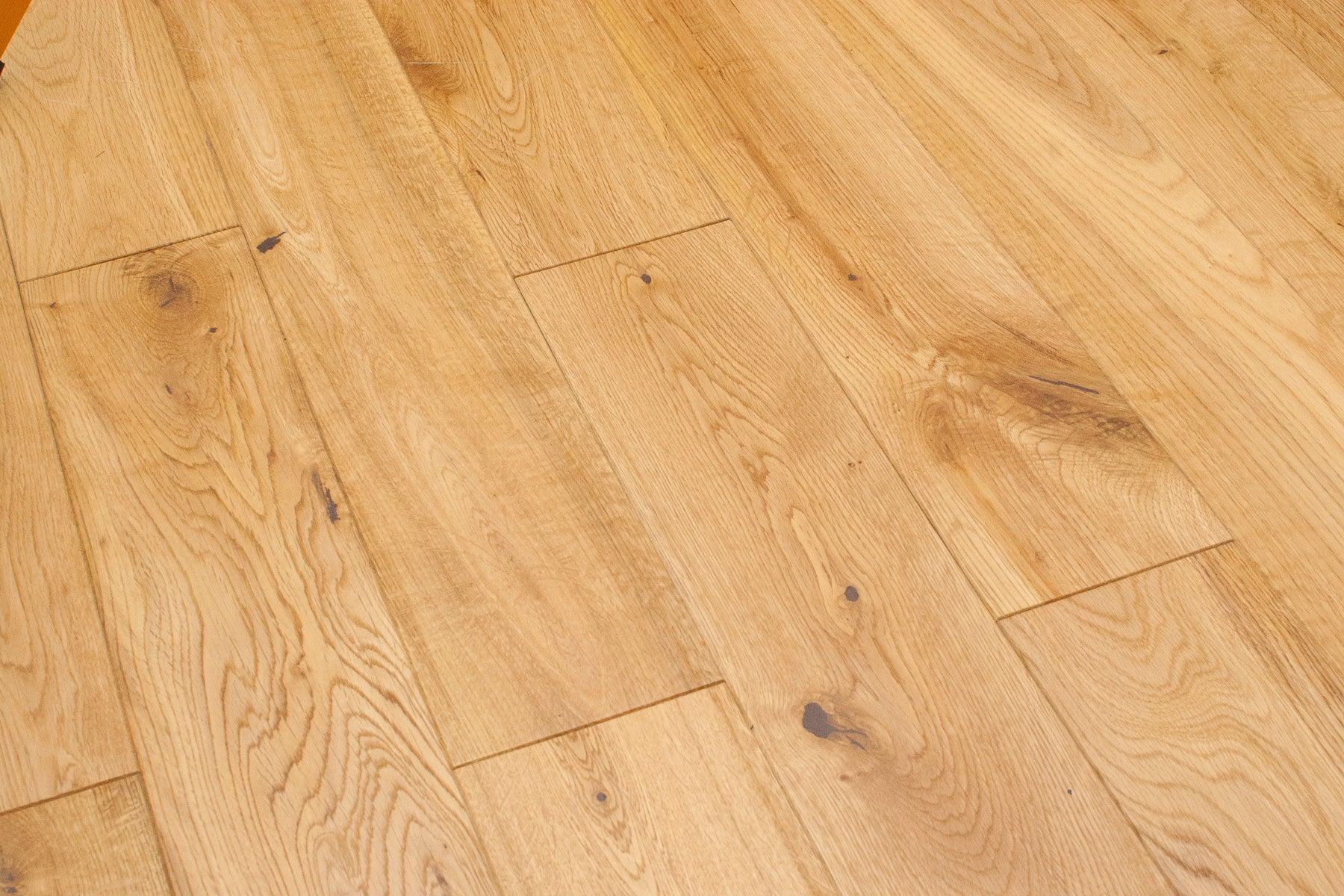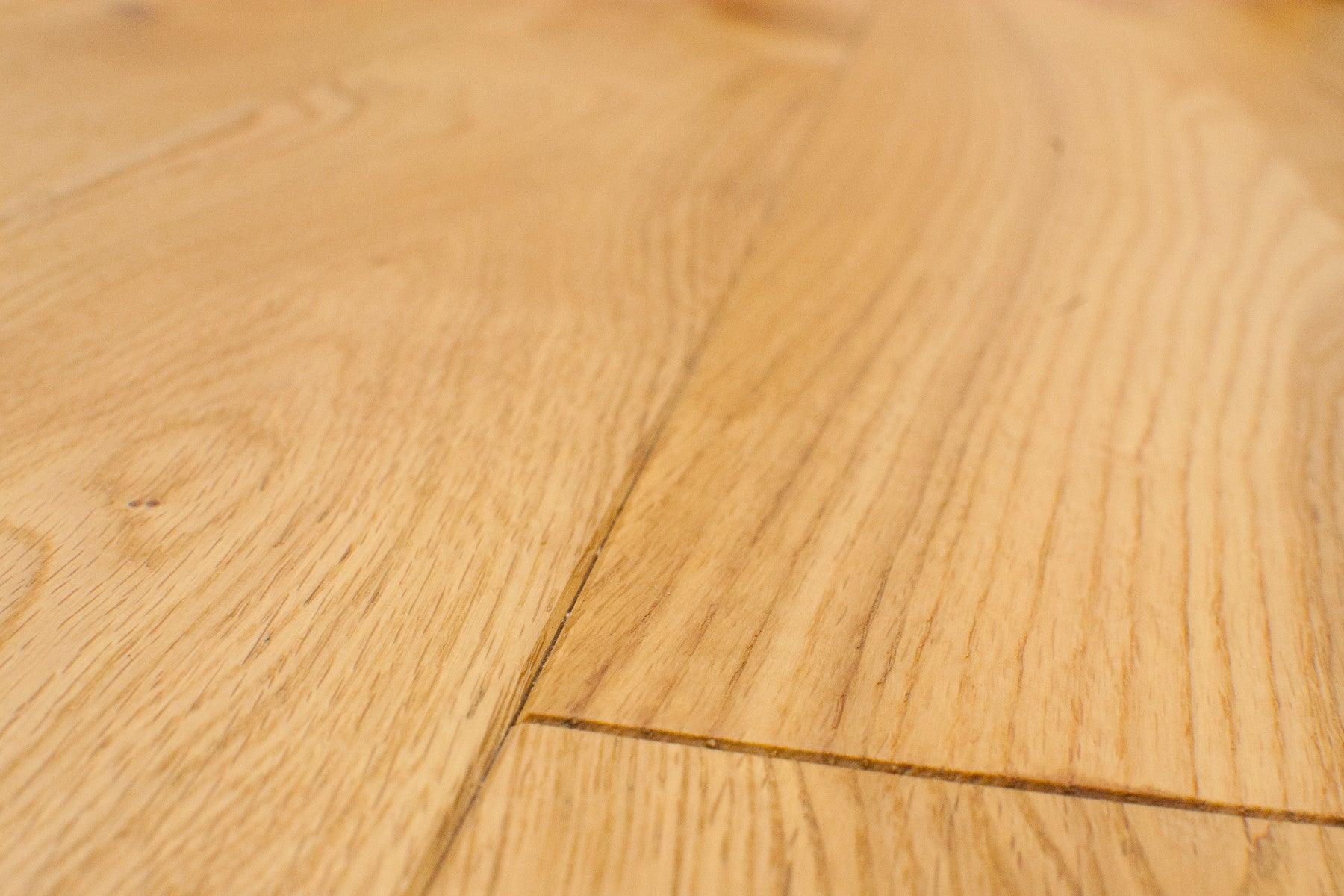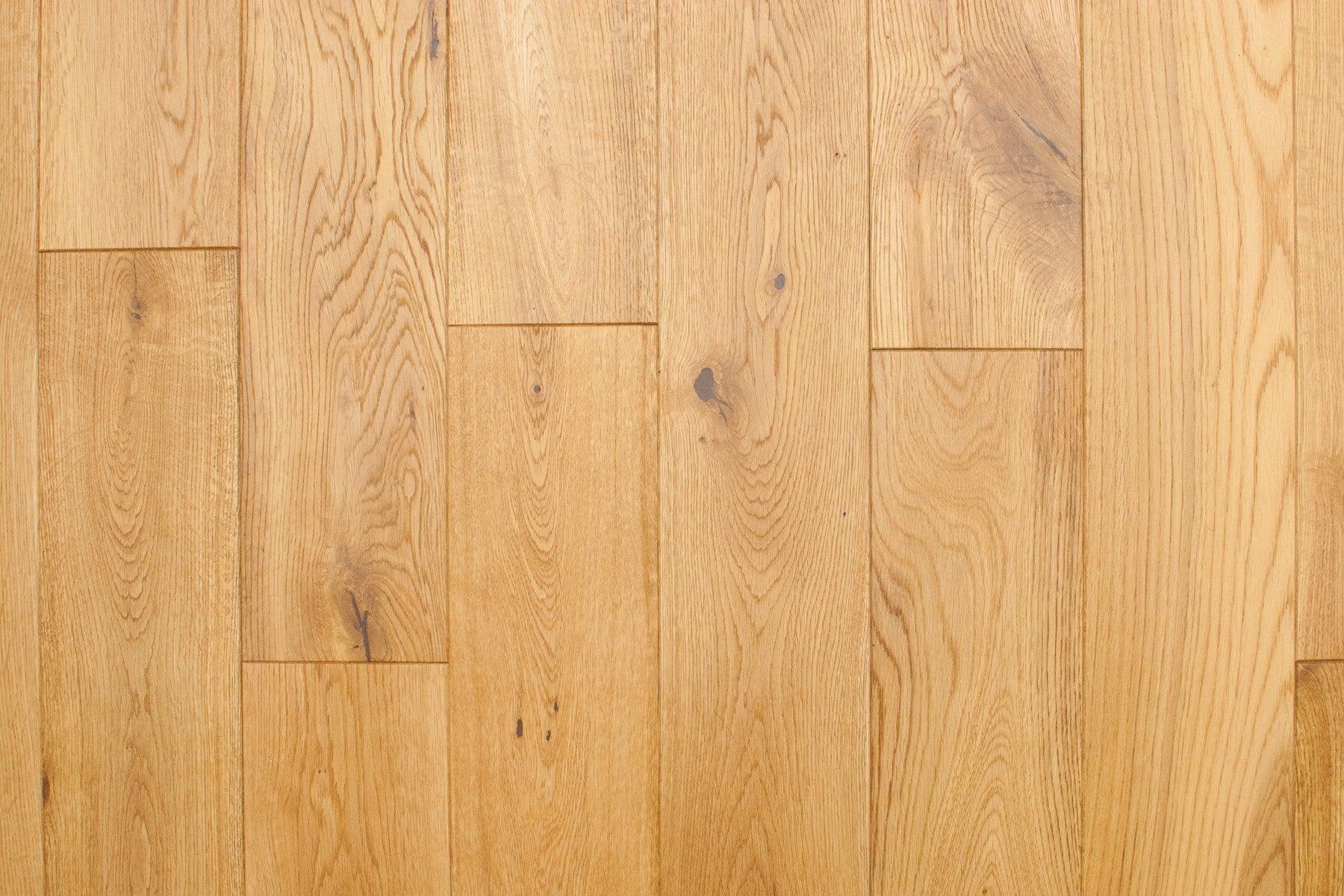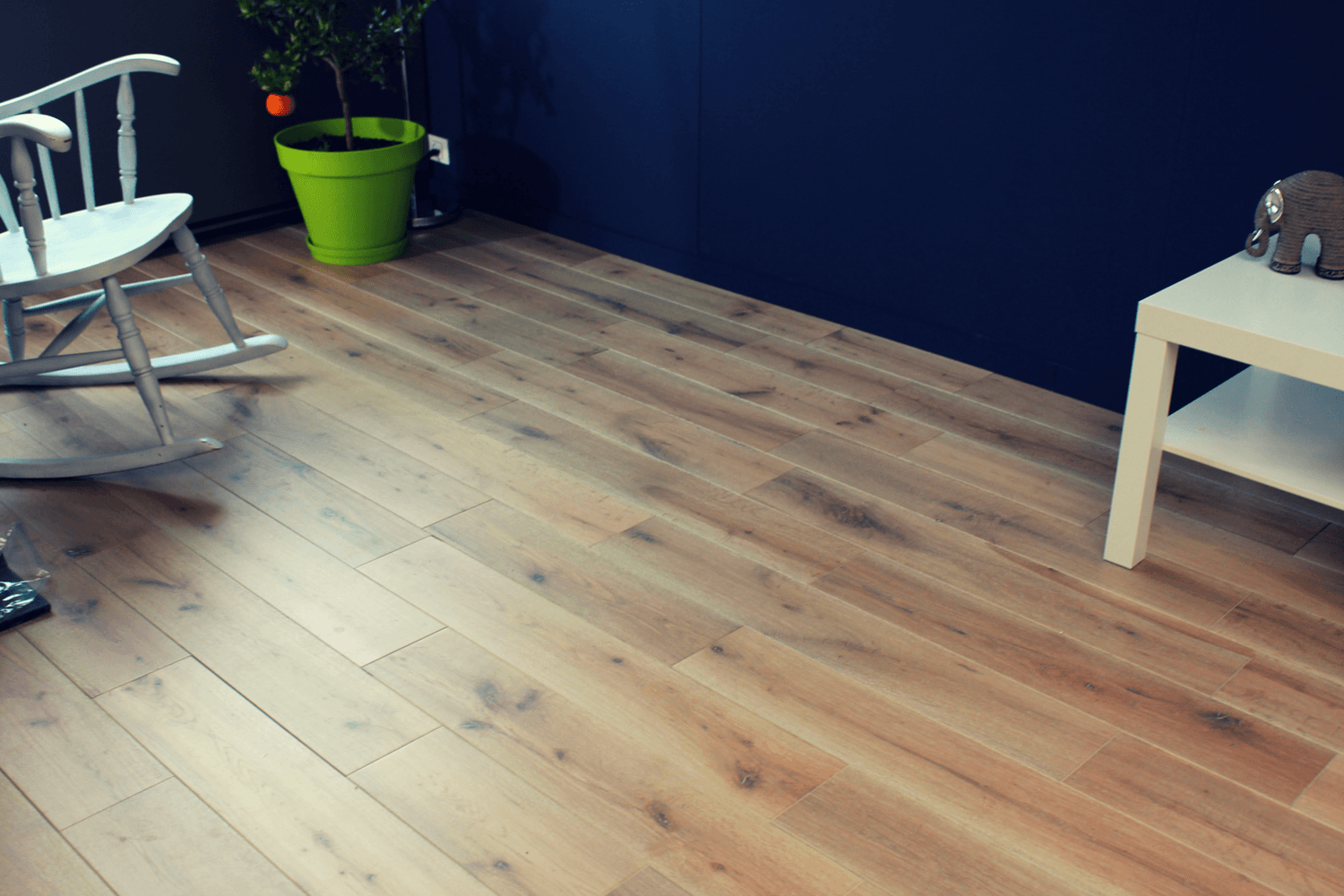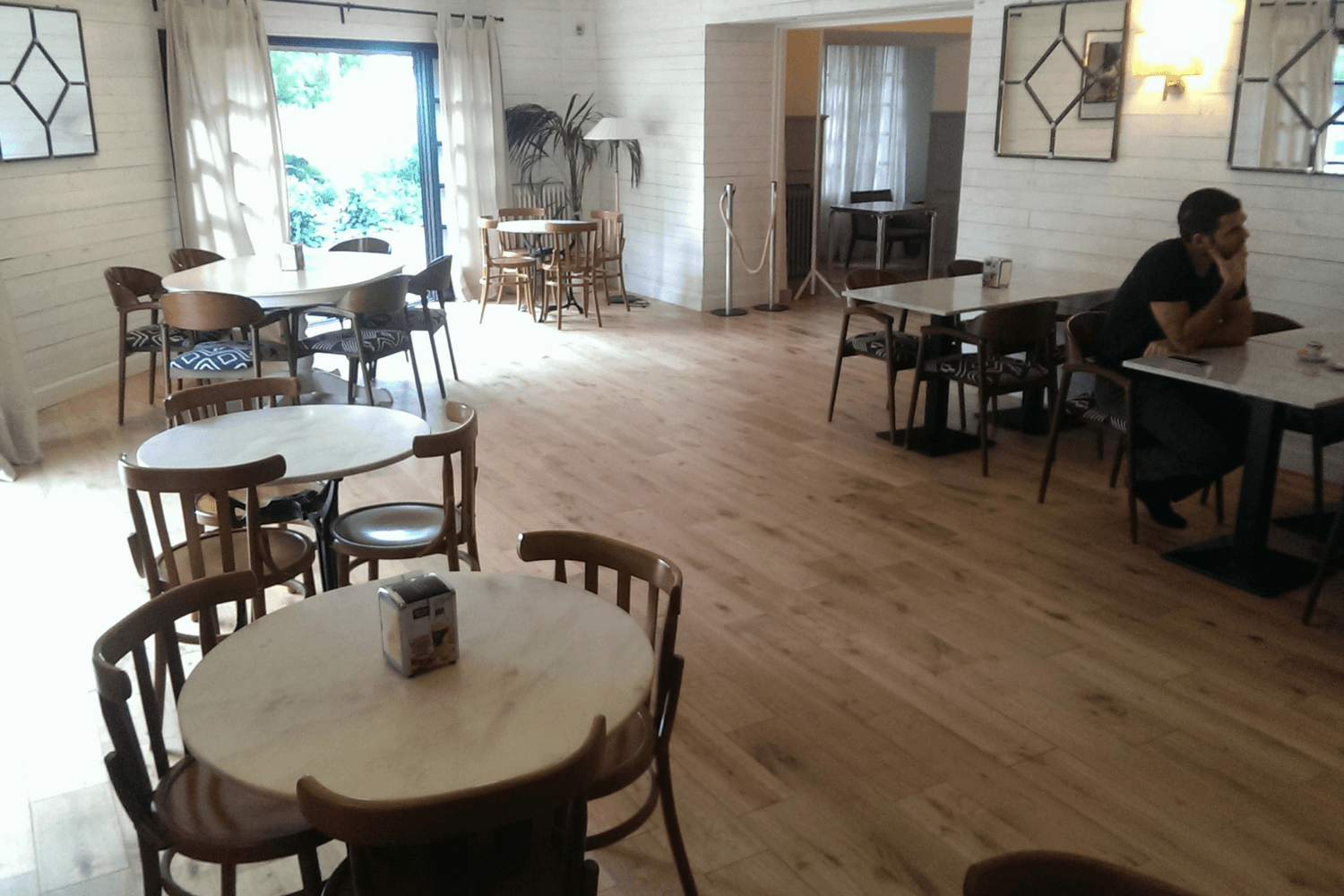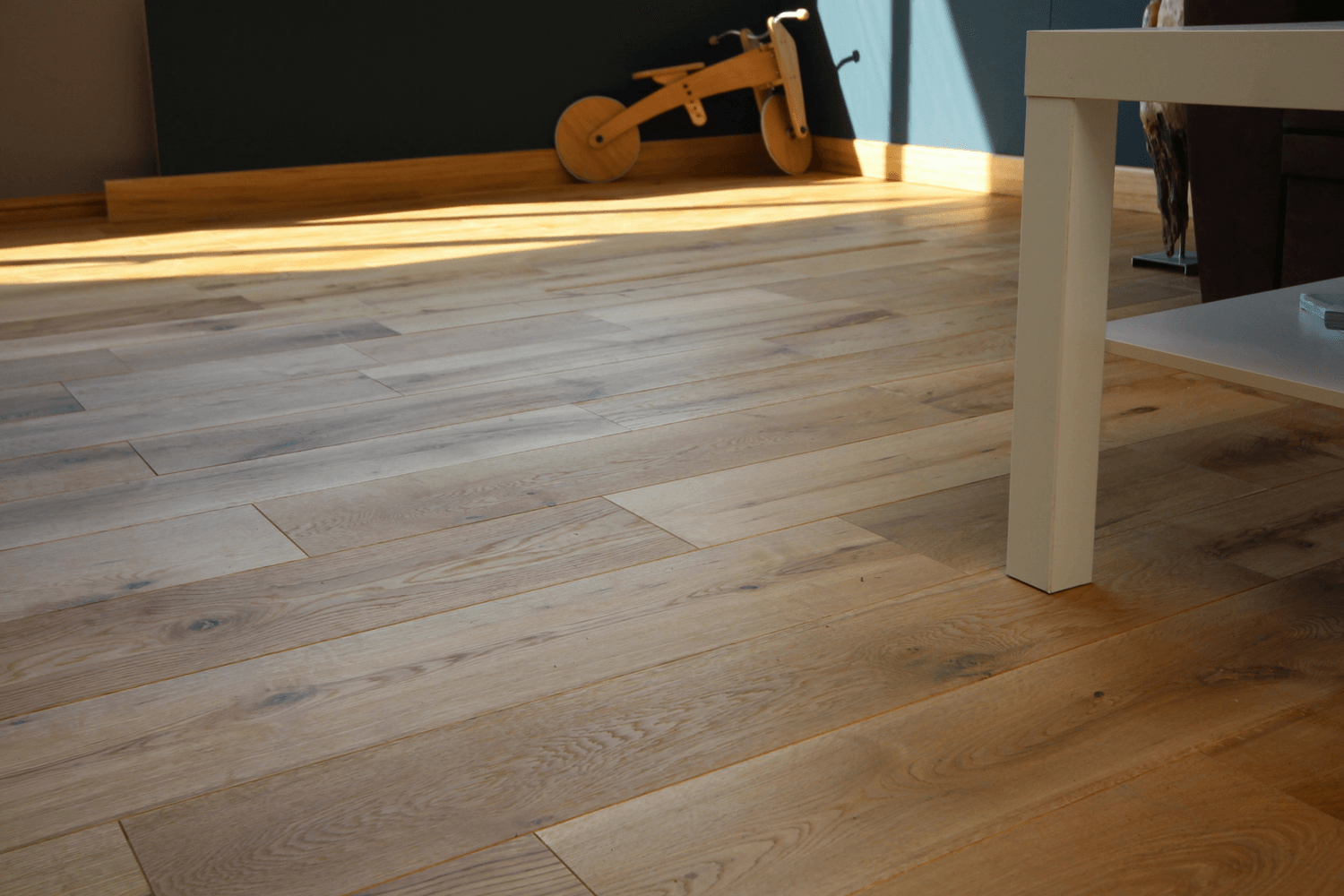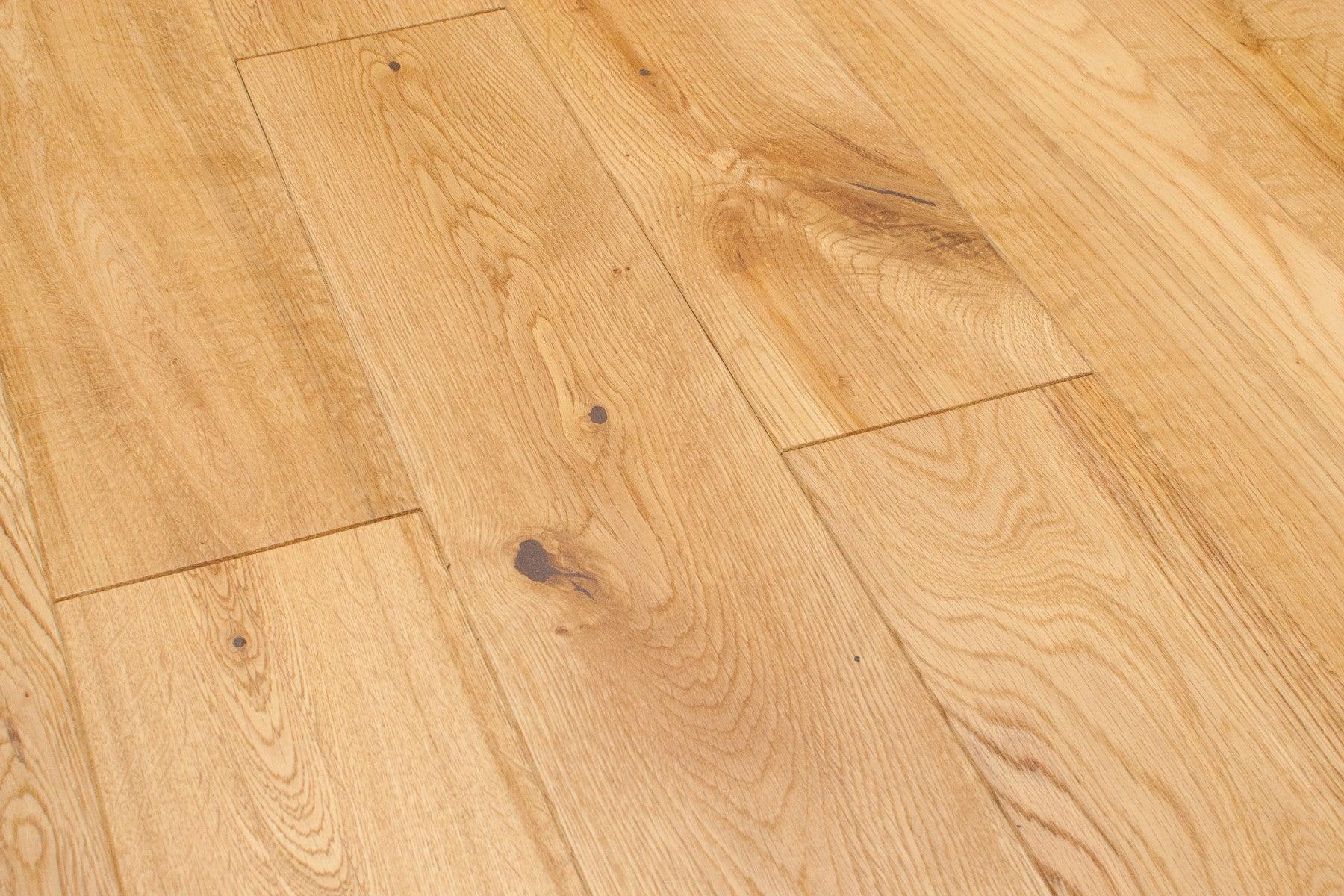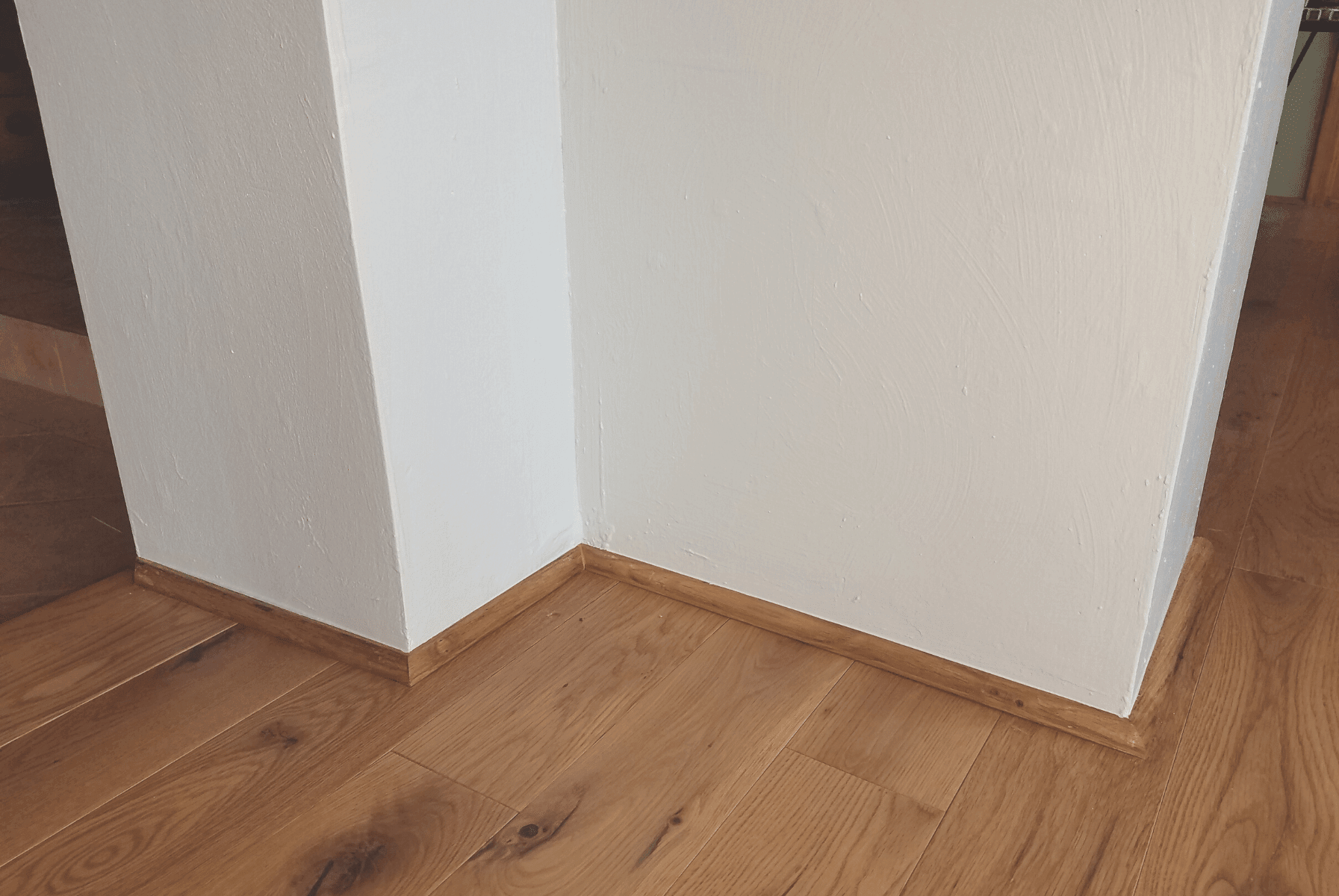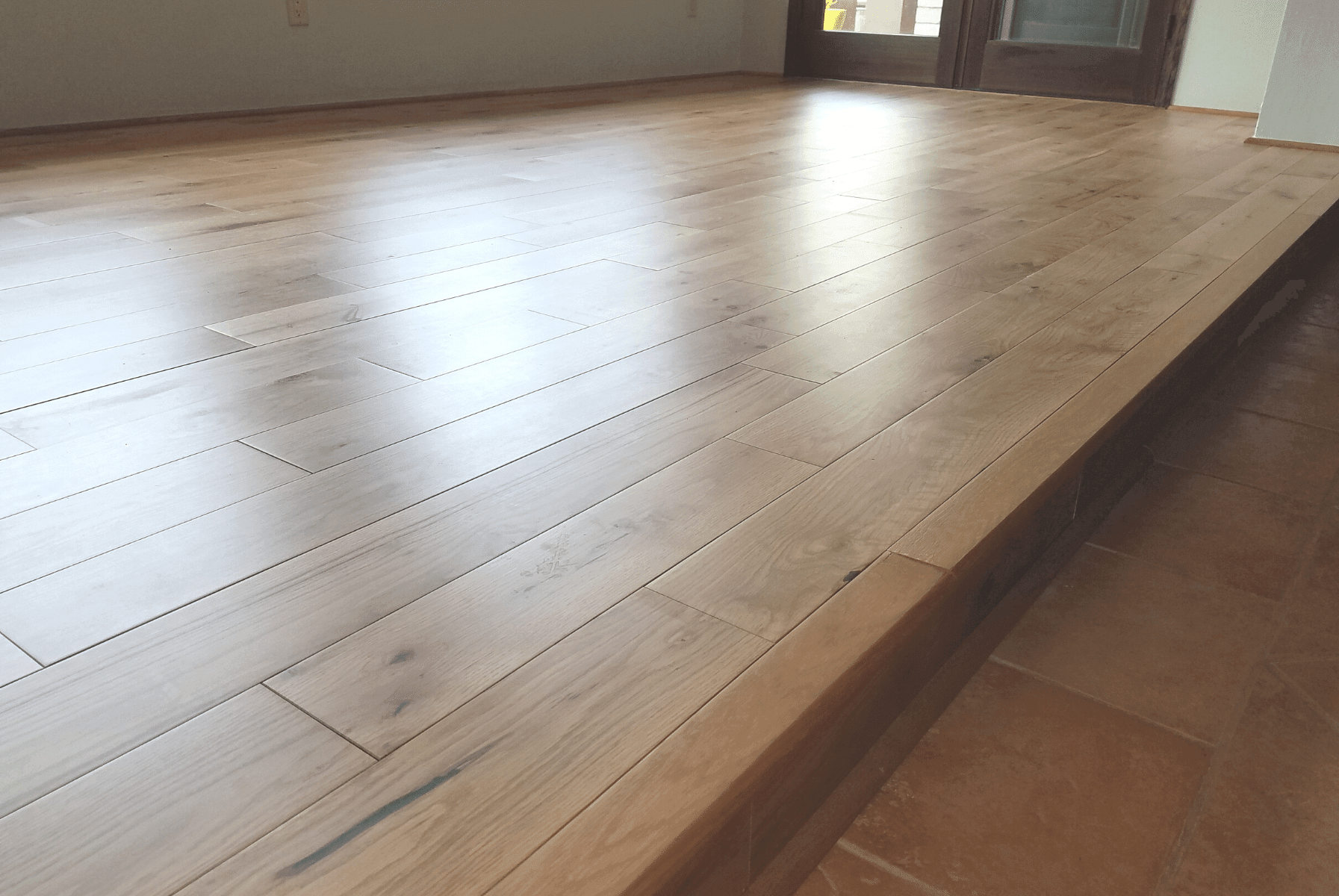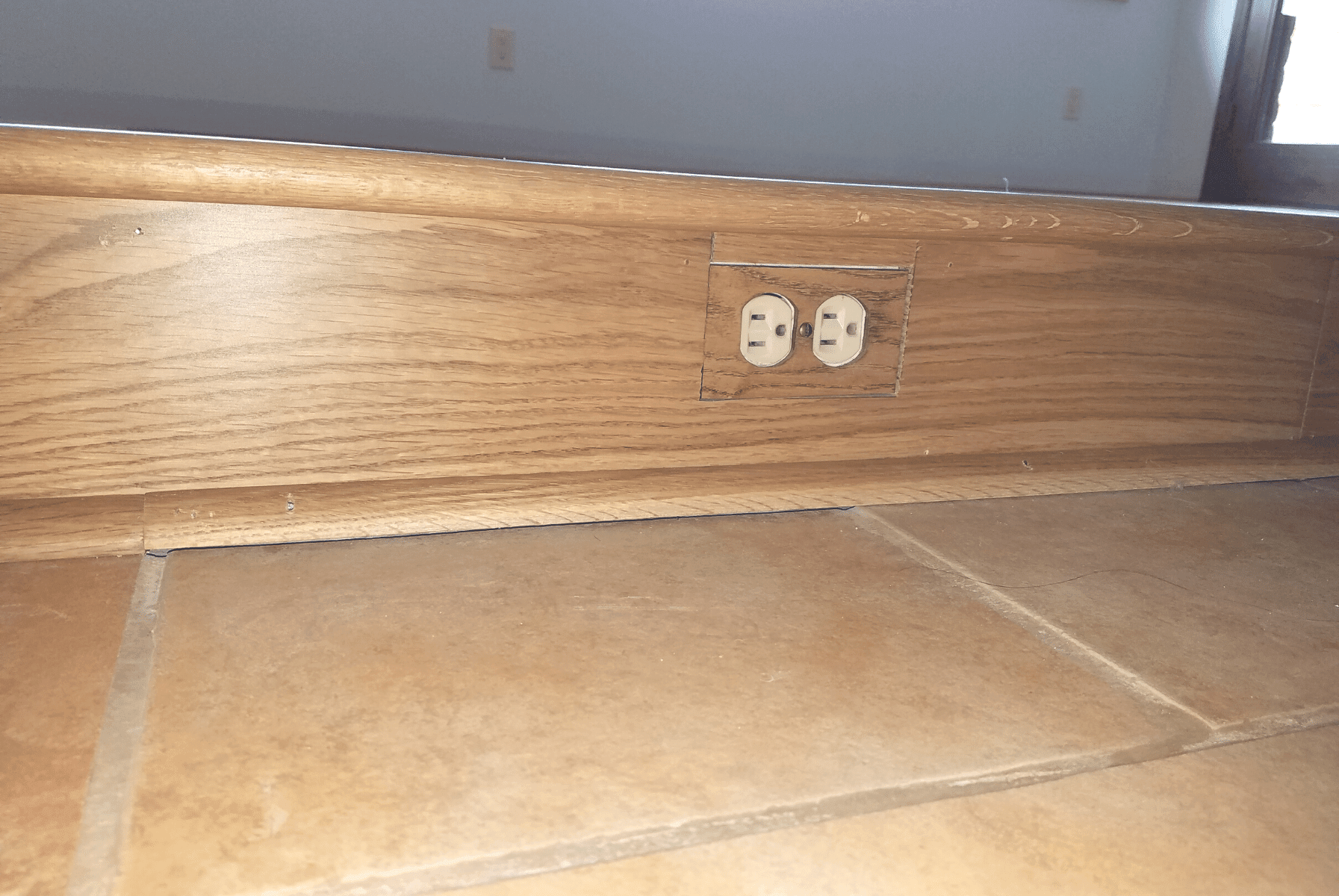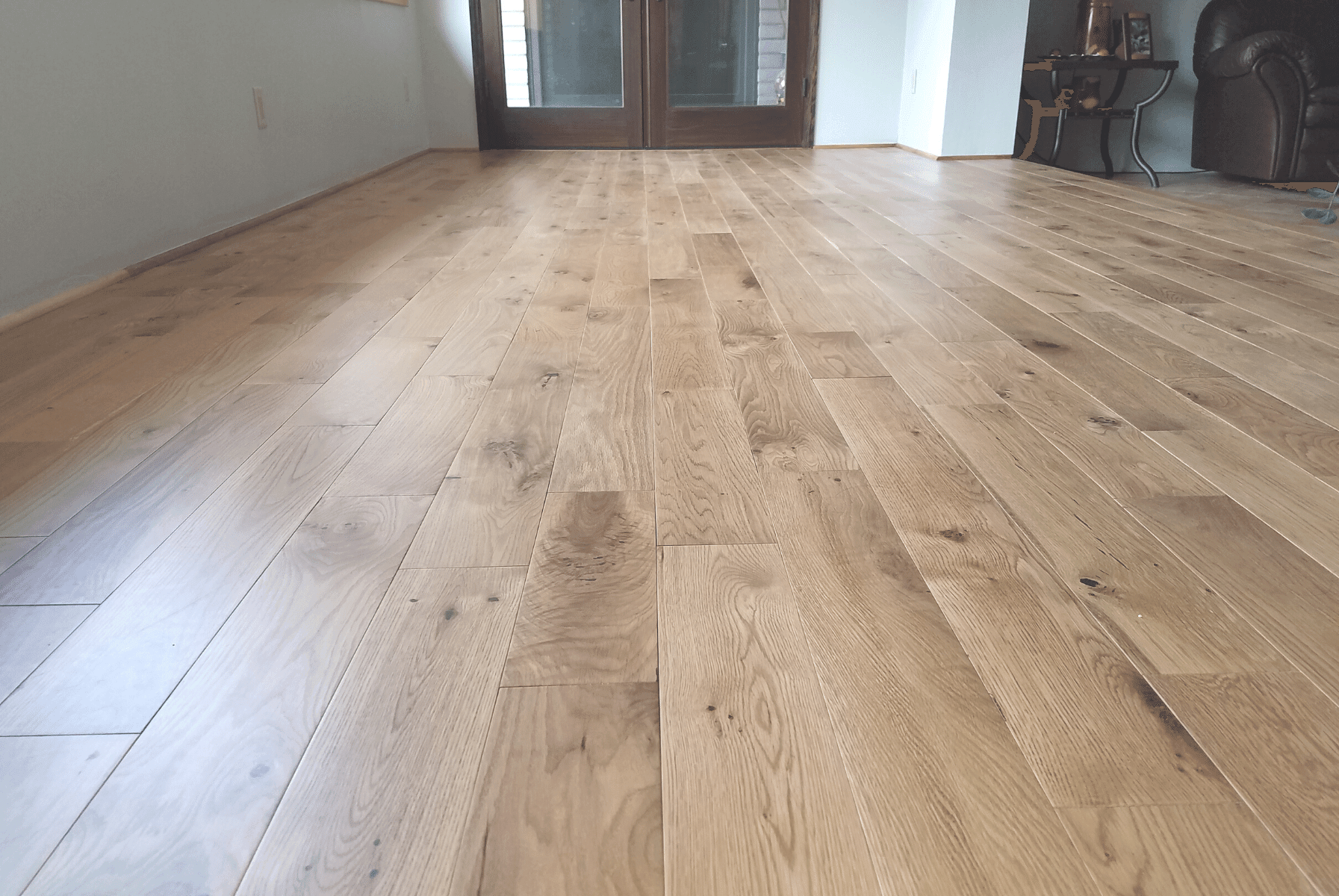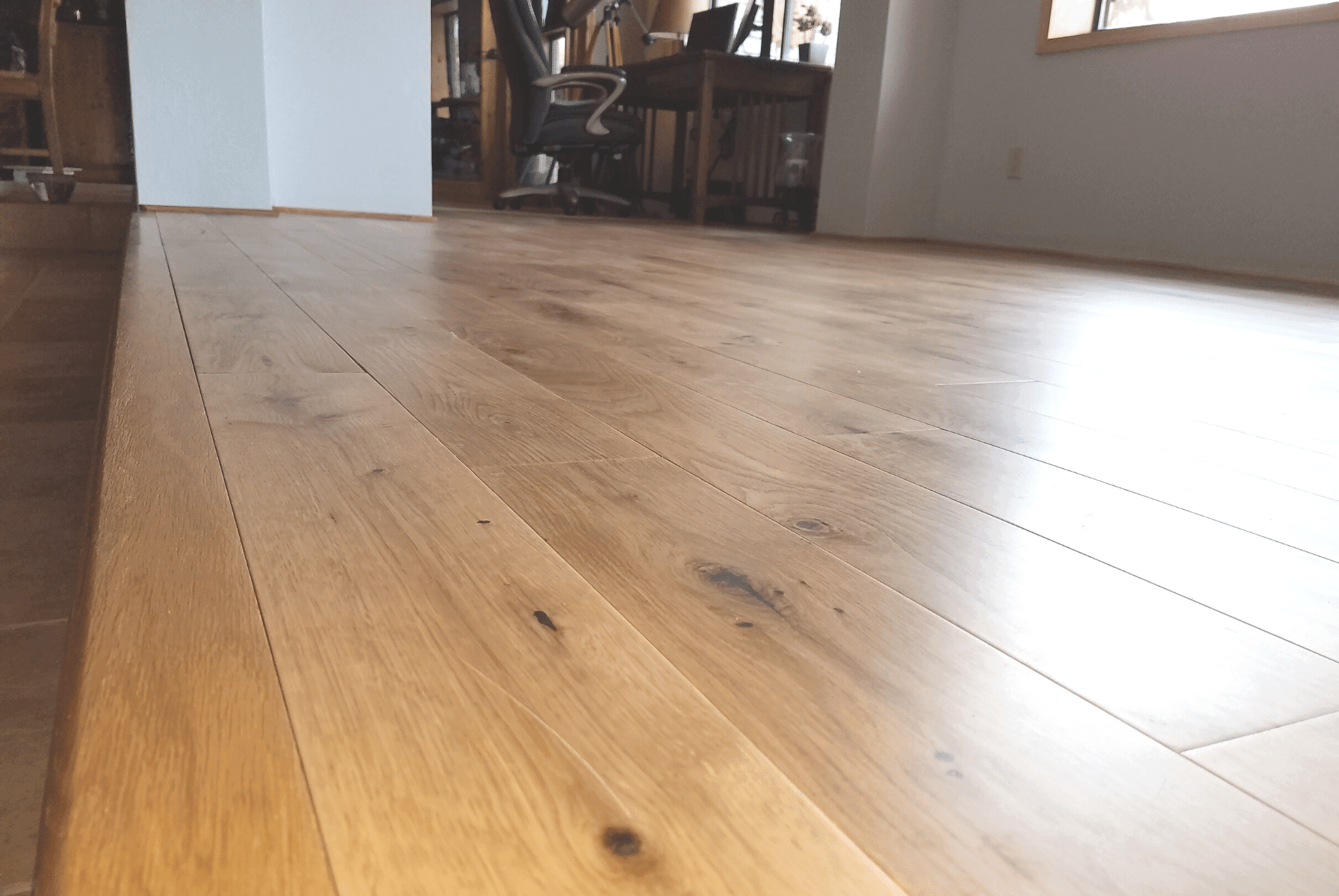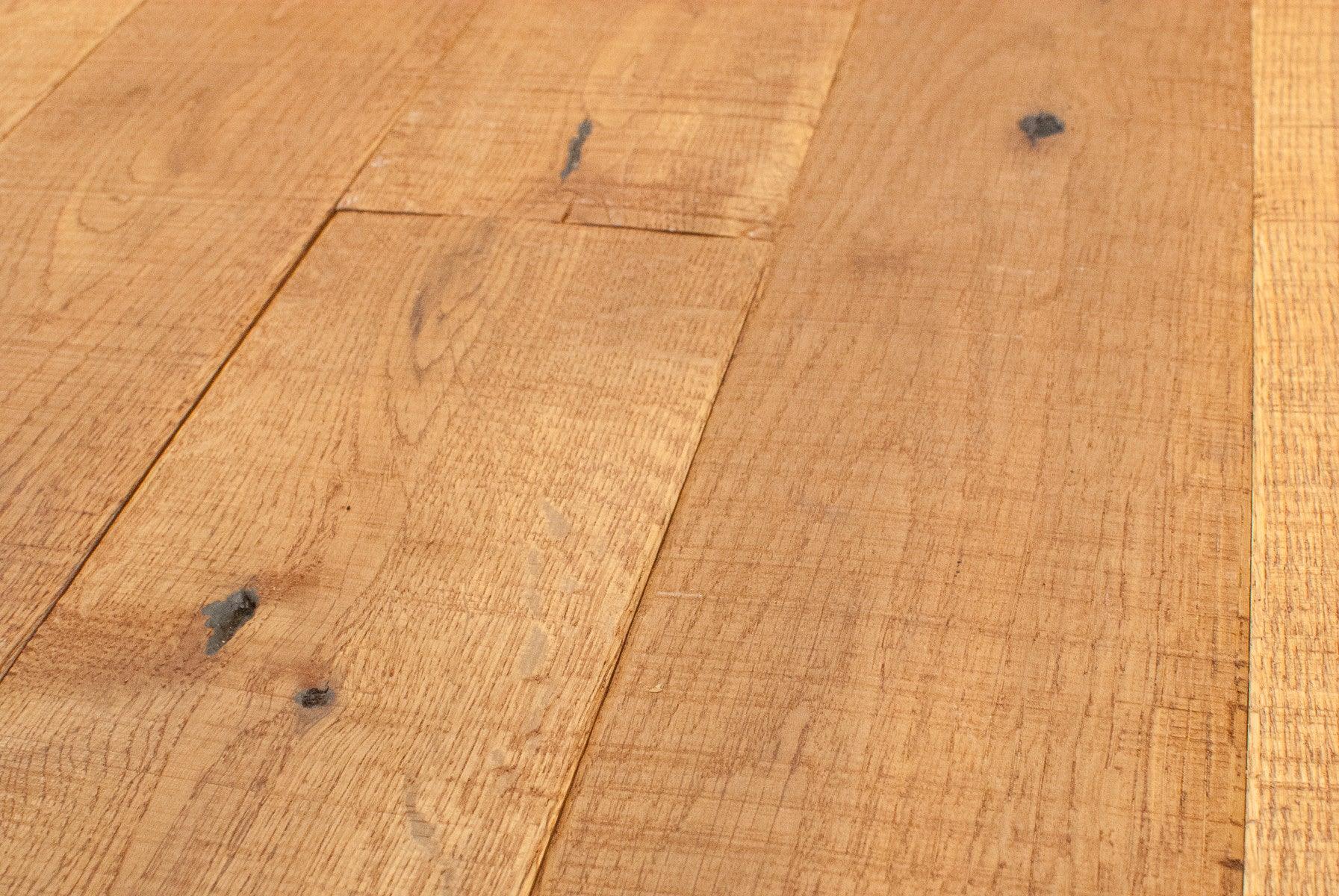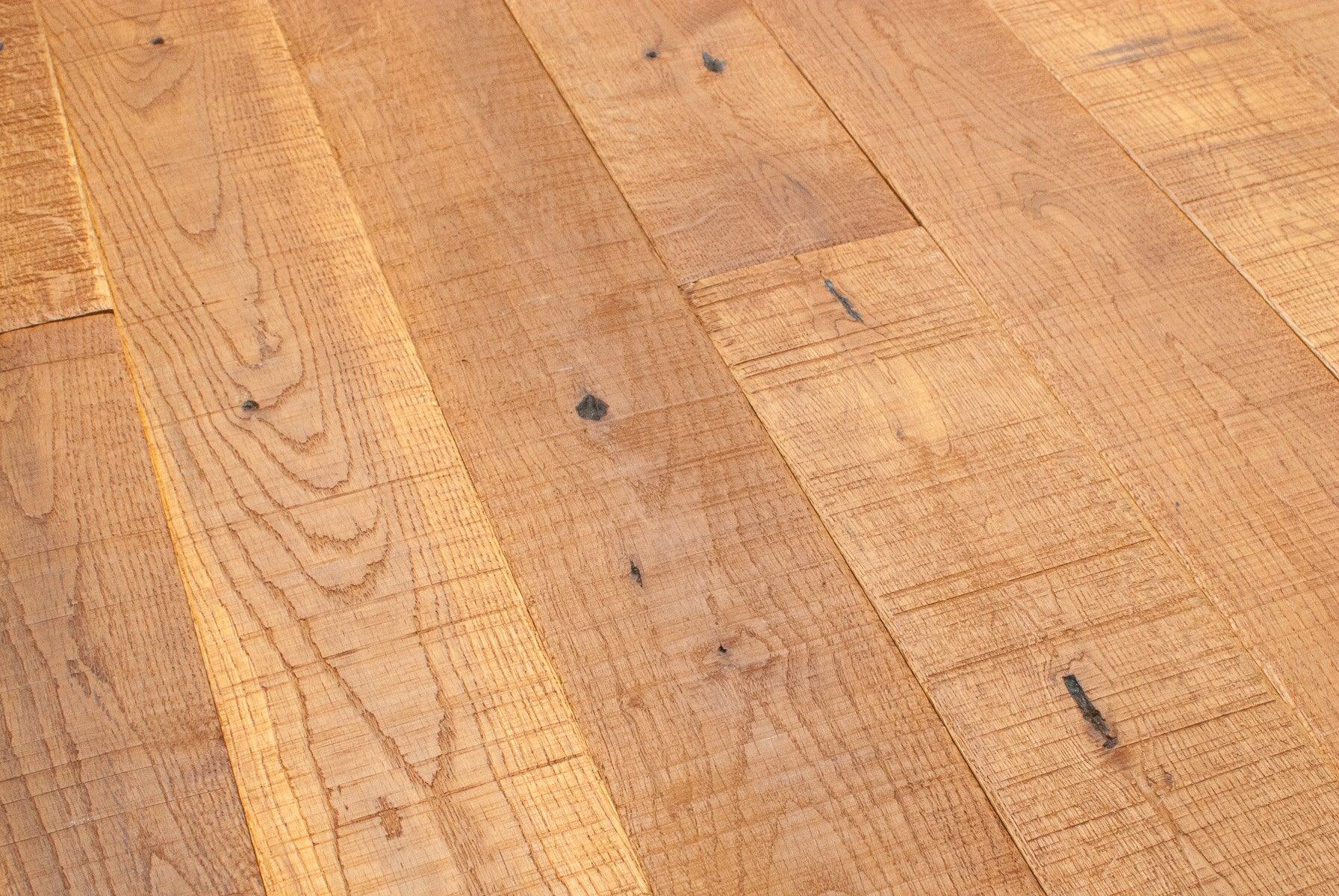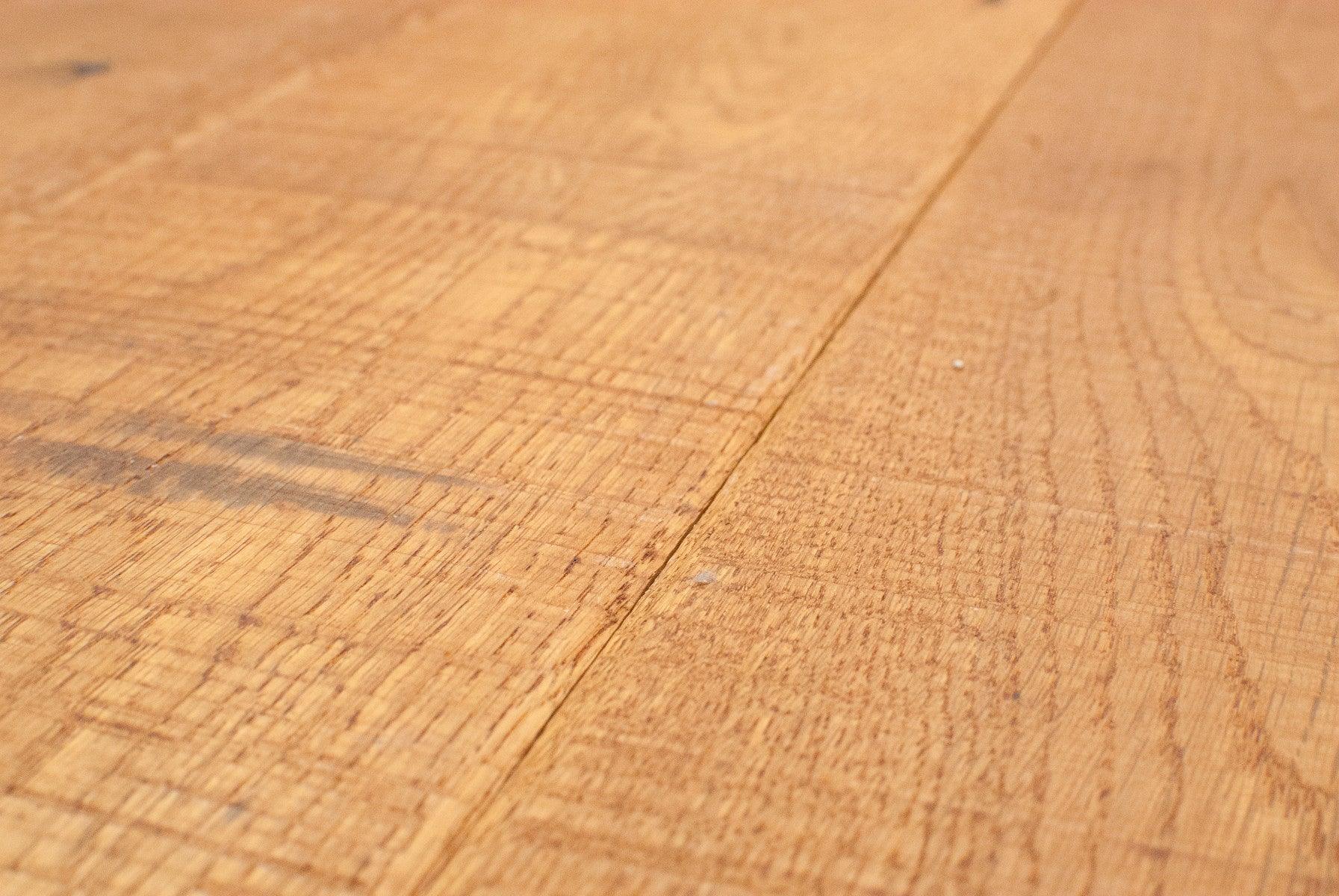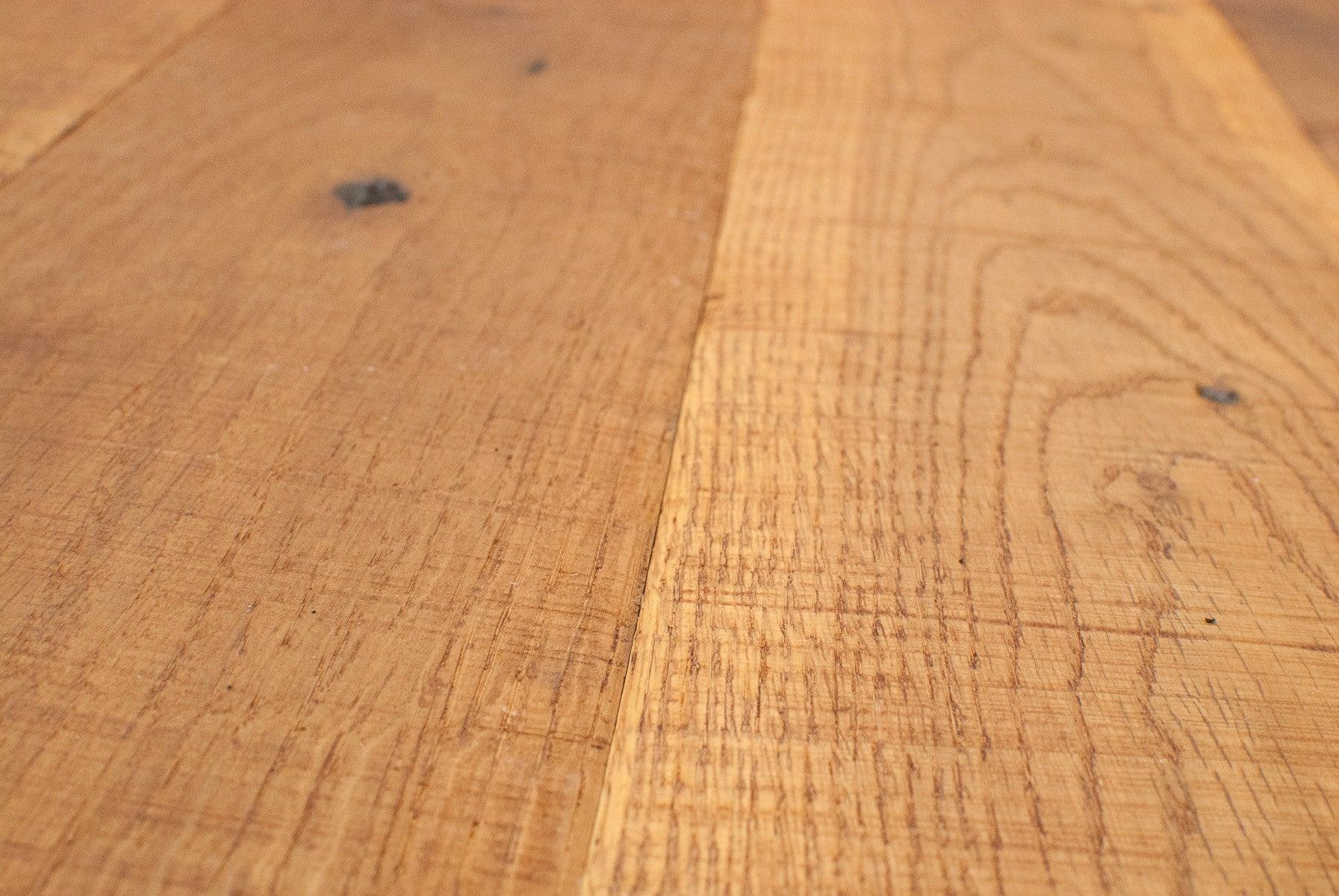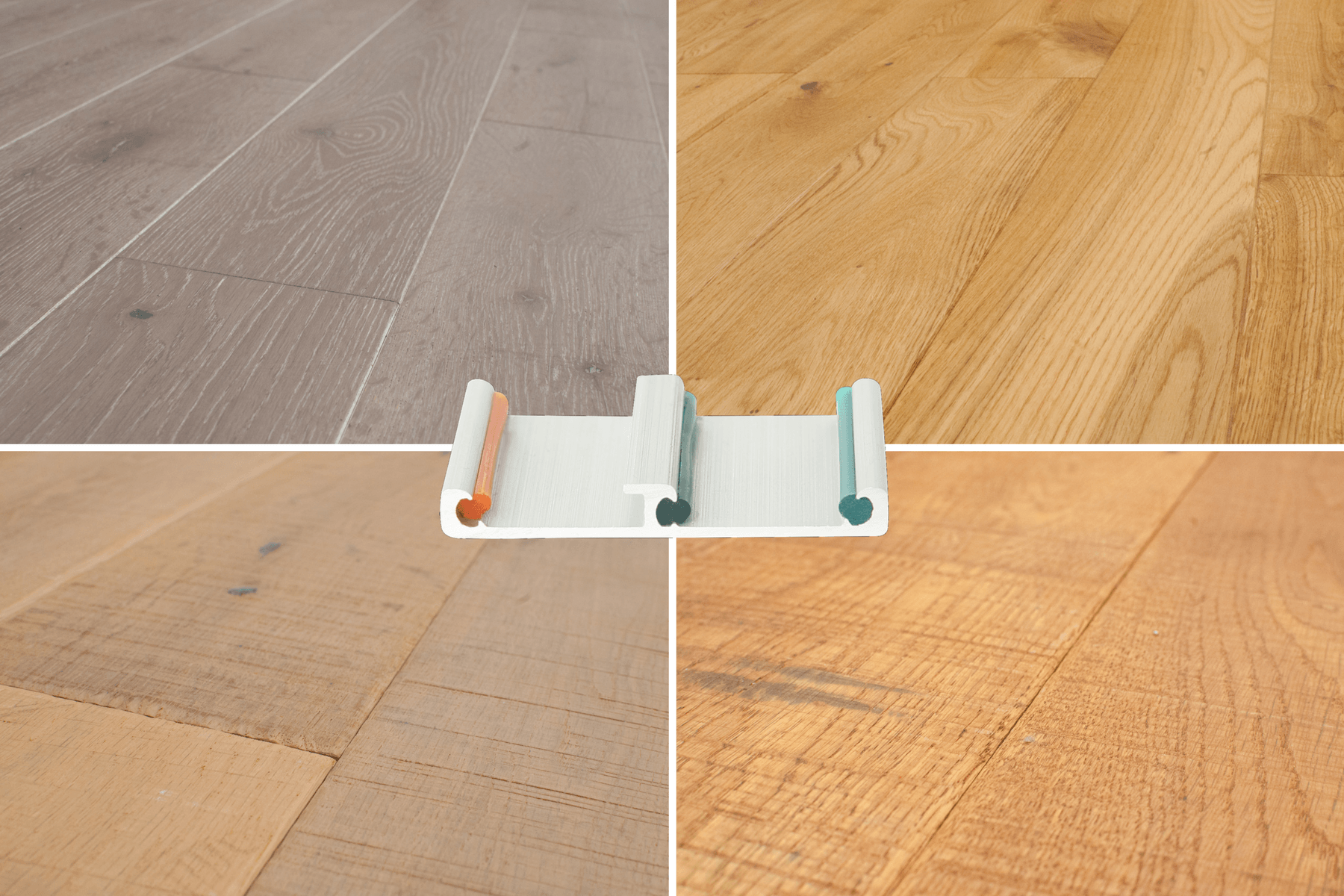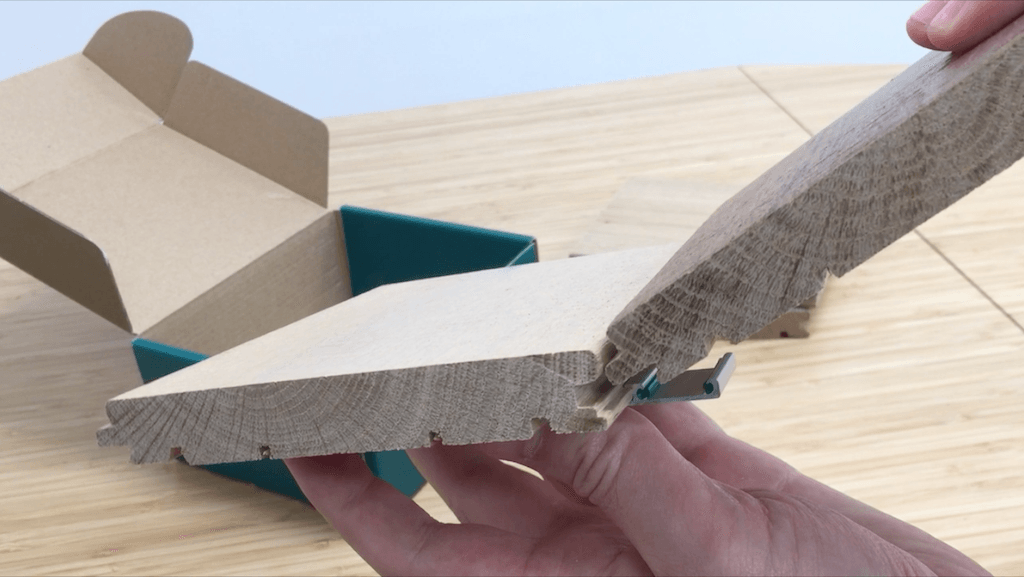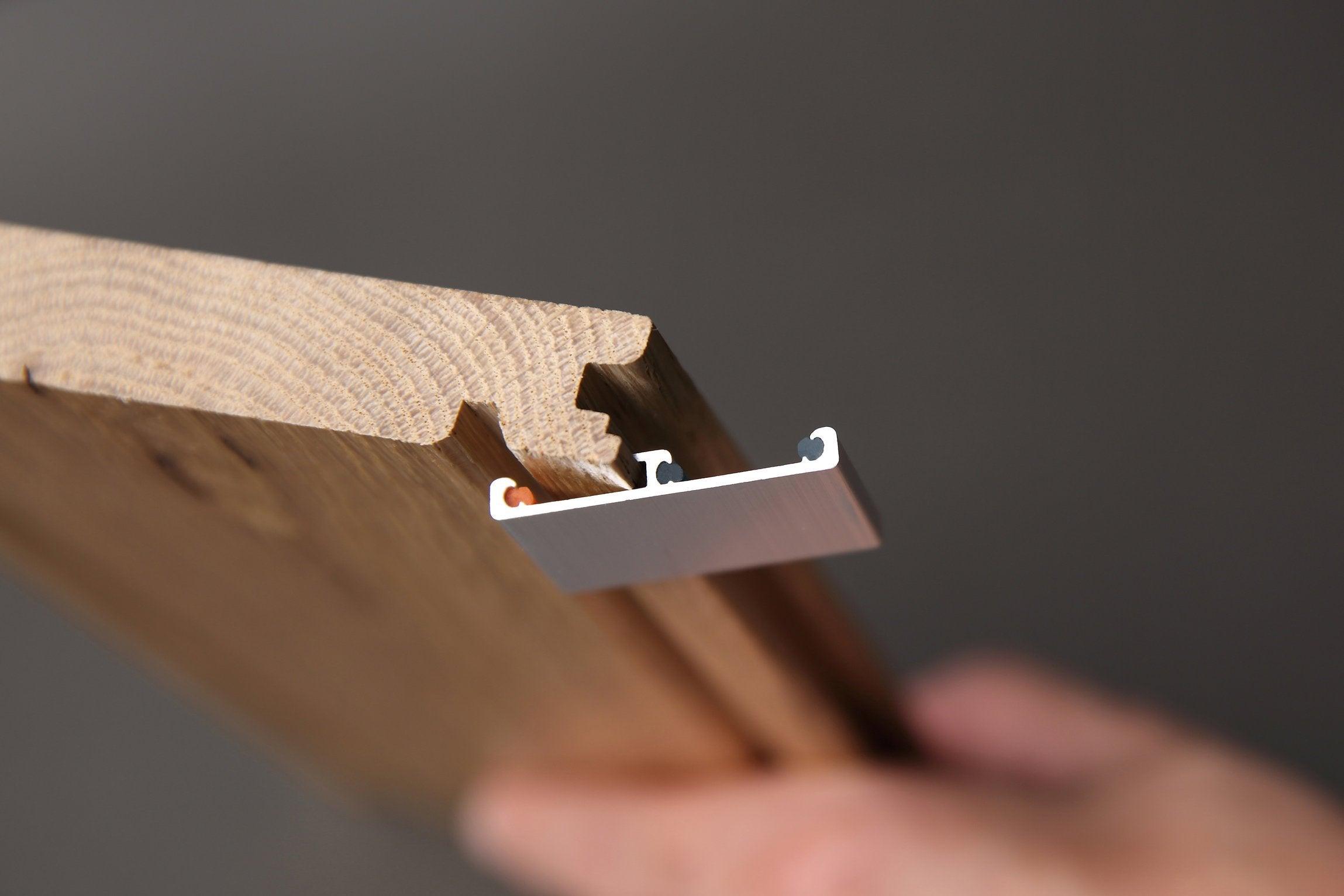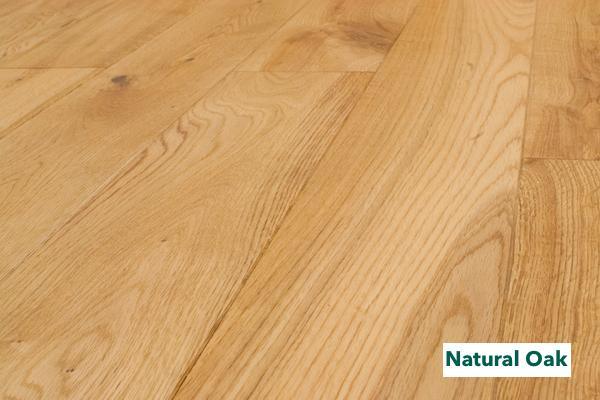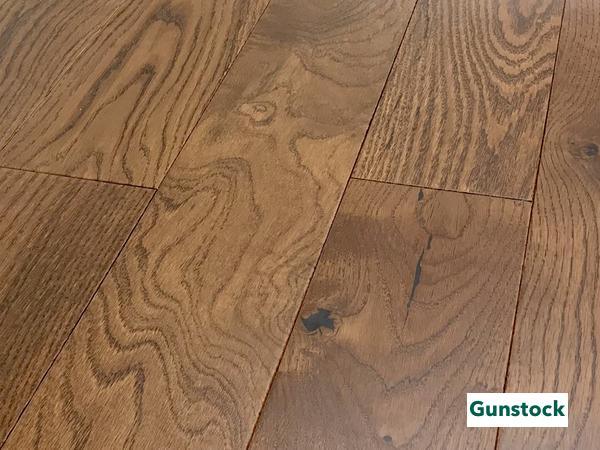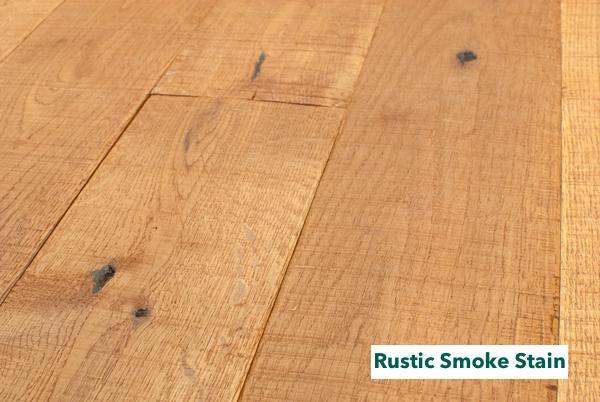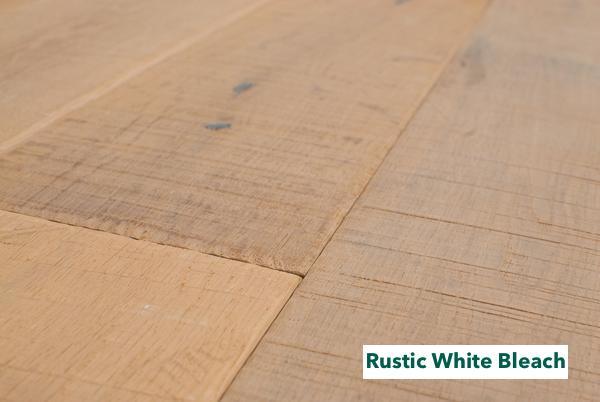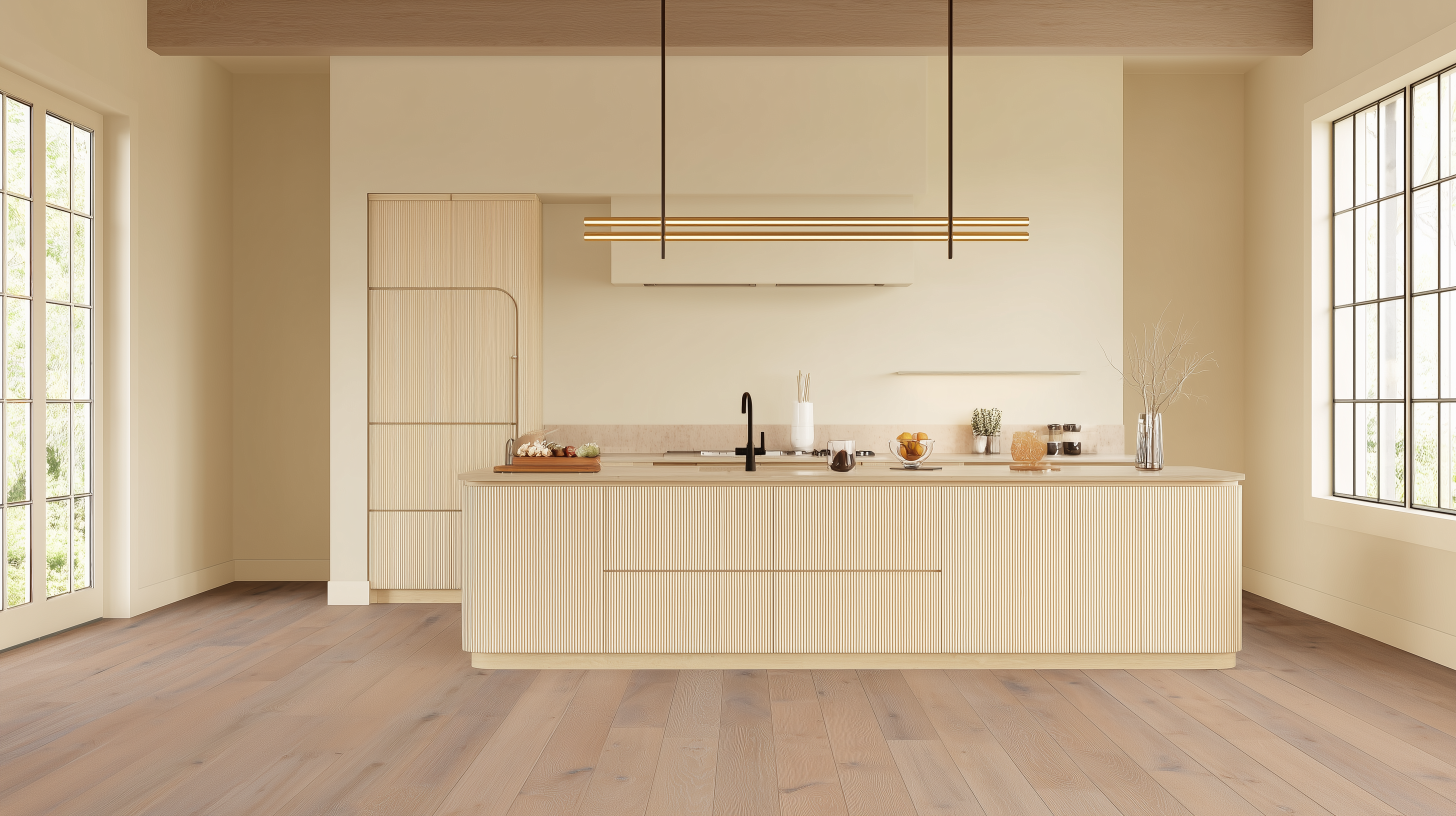When choosing new flooring, you're not just selecting a surface—you’re setting the tone for every step, spill, and sunbeam that follows. From budget-friendly alternatives to heirloom-quality planks, flooring shapes how your home lives and breathes. This guide walks you through laminate, engineered, and solid hardwood floors, not just as materials, but as design decisions. The goal? To help you pick a floor that holds up—and holds meaning.

The Flooring Trifecta: Laminate, Engineered, and Solid Wood Explained
Let’s find the right flooring choice for your home. We researched these three types of floors and compiled their features to save you time.
Laminate: Imitation with Intention
Sometimes called laminate hardwood flooring, it is not real hardwood at all. Instead, it’s a photographic copy printed on a vinyl sheet and laminated to a substrate material, usually a particleboard.

Laminate floors cost less per square foot because the only real wood is the particles inside. It is easy to install, usually a tongue and groove that snap together and floats over the existing floor.
Although it simulates wood, the vinyl can separate, become damaged, fade in direct sunlight, and rarely looks like wood.
Engineered Wood: The Layered Middle Ground
 Like laminate floors, engineered hardwoods floors have several layers, anywhere from 3 to 12. The more layers, the higher the quality.
Like laminate floors, engineered hardwoods floors have several layers, anywhere from 3 to 12. The more layers, the higher the quality.
Each layer cross stacks 90⁰ from the next for strength and then glued together under high pressure. The inner layers can consist of plywood, particleboard, or a synthetic compound. The top is a veneer of real wood ranging in thickness from 1/8" up to 3/4".
Engineered hardwood floors can install permanently with glue or nails, which takes skill and practice to get it right. Some also come as a floating floor that snaps together.
If not installed or maintained correctly, engineered floors can buckle and delaminate.
Solid Hardwood: Timeless, Textured, and True
As the name implies, hardwood flooring is wood boards made of solid wood, not sandwiches of different products. Solid hardwood flooring is a natural product cut from one species of tree. There are many species from which to choose depending on the color you want, and your budget.

The thicker the board, the better it is. 3/4" is the best quality and can be resurfaced many times during a lifespan of 70 to 100 years.
The most common wood used for floors is oak. It’s hard, durable, sustainable, and has a look that fits any décor. White Oak is a natural blonde color but accepts any color of stain including black.
Looks Matter: How Each Flooring Type Performs Aesthetically
 Laminate flooring is a fake hardwood floor made of vinyl. With the addition of a wood grain texture and high definition photography mimicking the real wood, it can resemble a wood floor from a distance. However, once you stand on it, you can tell it’s not wood.
Laminate flooring is a fake hardwood floor made of vinyl. With the addition of a wood grain texture and high definition photography mimicking the real wood, it can resemble a wood floor from a distance. However, once you stand on it, you can tell it’s not wood.
One giveaway is the repetition of the wood grain pattern throughout the floor.
Overtime vinyl can become worn, scratched, and begin to fade. The floor can’t be refinished, and it must be replaced.
Engineered wood floors give any room the luxurious look of wood. Better quality brands will be indistinguishable from solid wood for a few years.
Instead of grading engineered wood floors, most manufacturers create products or brand names categorized according to veneer, finish, and milling. Cheaper brands will have shorter pieces and can have many knots that you may not see in the samples.

The thickness of the veneer determines whether you can refinish it. Typically from one to three times during its life.
Hardwood floor - On the other hand, solid or real hardwood is a natural product, each board is unique. There is a grading standard by the National Oak Flooring Manufacturers Association (NOFM) which most manufacturers follow. The four grades are:
- Clear - very few small character marks, uniform color
- Select - more color variation and more natural character marks like small knots
- No. 1 Common - more varied appearance, with mineral streaks, greater color variation
- No. 2 Common - a rustic appearance that may include large knots and very dark boards
Grading has little to do with the quality of the wood. It’s more about the appearance, and what look you’re trying to achieve. However, the lower the grade, the shorter the board.

No matter what type of hardwood floor you choose, it brings a unique character and warmth to any home.
Durability & Longevity: Which One Lasts the Longest?
Laminate floors – These floors have the least durability of your flooring options. The top layer is, after all, vinyl with a photograph. Vinyl is tough, but if one or more boards get damaged, there is little hope of finding replacement boards to match. You may end up laying down a new floor.
One problem with laminate floors is the joints. Should they get saturated or installed incorrectly, they will push together and cause peaking. Individual pieces may delaminate over time and stick up creating a tripping hazard.
I would like some feed back if possible! How many people have this problem with there laminate flooring? Swelling?? pic.twitter.com/dMzVWSSmJH
— Scott Wilkinson (@WilkinsonSw) March 14, 2014
Laminates are highly susceptible to moisture and almost impossible to repair. The surface is harder than wood, making it louder and sometimes slippery.
Engineered floors – The floor is almost as durable as solid wood. However, floors with thin veneers have the potential to become de-laminated or chipped. Individual pieces can separate over time and leave unsightly gaps.
Solid hardwood – You’ll get the best durability with solid wood floors. You can sand and refinish five or six times over the life of the floor compared to only 1 to 3 with engineered. Solid wood resists dings better than engineering.
Moisture and Movement: What Happens When Things Get Damp
Laminate floors - Regular laminates absorb moisture and are unsuitable for wet area applications, but there are a few waterproof options on the market. If waterproofing is more important than aesthetics, it may be the right choice for a bathroom or basement.
Engineered floors – These floors are not meant for high humidity or wet areas. They are best for interior rooms where the humidity levels stay between 45 to 65%. Although engineered floors have dimensional stability, they’re not recommended for use in bathrooms.
Curious what the humidity levels are like in your home now? One of these handy (and cheap) gadgets can answer that question for you:
Hardwood floor - Solid wood works best in areas where moisture is low, and humidity levels stay at a constant 50 to 60%. See this article for how to install hardwood below grade and bathrooms.
Installation & Maintenance: How Each Floor Lives With You
Other than the initial cost of materials, the other considerations for floors are installation, repair, and maintenance.
There are 2 basic methods of installation for any floor, permanent and floating. Briefly, a permanent installation means the new floor attaches to the subfloor with nails, screws, glue, or a combination. Once installed, the floor cannot be removed without damaging it.

Floating floors do not attach to the sub-floor. Each board connects like a puzzle and lays on top of the sub-floor. Installation, removal, and repair is a much simpler process with this method.
Let’s look at each type of floor.
Laminate floors – They typically snap together and float on top of the subfloor. After vacuuming, you can clean laminates with a damp mop, but do not leave standing water as it can seep into the seams and delaminate the surface. If damaged, you cannot repair a laminate floor, it must be replaced.
Engineered floors – A typical engineered floor is permanent, requiring nails and/or glue to attach it. Floorcare includes dusting or vacuuming. You may use a Swiffer-type damp mop if there is dirt build-up. However, avoid chemicals or lots of water as it can ruin the wood and delaminate the top veneer. Repairing scratches and gouges with floor repair products is possible. If necessary, the floor can be sanded and refinished.
Hardwood floor – While most hardwood floors require permanent installation, Easiklip solid hardwood floors do not. They fit snugly together with tongue and groove seams and held in place with patented clips. It is the best solution for DIYers wanting hardwood.

For maintenance, use a microfiber dust mop or vacuum. Use a lightly dampened mop if necessary. As with any wood, avoid water and cleaners. Use only products designed for wood floor care.
Depending on the severity or type of damage, wood offers easier solutions from coloring a scratch with a marking pen to sanding and refinishing the entire floor. You can refinish solid hardwood many times over the life of the floor.
Here is more information on how to install hardwood floors.
For wood floors, engineered or solid, don’t use wax, harsh detergents, or vinegar. Every few months, polish the floors using an approved product. Polishing fills in the small scratches, brings back the shine and protects the wood.
RELATED: Check out this article on cleaning and maintenance products best suited for wood floors.
Eco-Friendliness & Off-Gassing: What’s In Your Air?
Stains, polyurethane sealants, and industrial adhesives all give off chemicals, VOCs (Volatile Organic Compounds), in a process known as "outgassing." If you have opened a can of paint or tube of model glue, you know what it smells like.
Laminate floors – The outgassing problem is most apparent in laminate floors. There are some Chinese laminate new flooring brands with such a severe outgassing problem that 60-Minutes devoted an entire segment to the issue. There was a class action lumber liquidators’ lawsuit, and you can find a list of laminate flooring with formaldehyde here.
Engineered floors – Because Engineered wood floors also use similar processes as laminates, there is a potential for outgassing.

Hardwood floors - The flooring with the least amount of VOCs (Volatile Organic Compounds) is pre-finished solid hardwood. There is only a small top layer of polyurethane, and by ordering pre-finished wood, the VOC’s have had time to dissipate.
How long does laminate flooring off-gas? According to CDC, it takes about two years to stabilize. Engineered flooring can have similar issues. Solid hardwood uses no adhesives, and if you purchase pre-finished, the process removes all VOCs before it is shipped.

Cost Comparison
Below is a chart comparing cost and other features of the three types of flooring. Installation costs are about the same for all floors. However, floating floors take less time and materials. If you plan to install the floor yourself, go with a floating floor.
If you’re going to sand and finish a hardwood floor on-site, that will increase the installation cost and timeline dramatically.
Quick Comparison Table
|
Description |
Laminate Flooring |
Engineered Wood Floor |
Solid Hardwood Flooring |
|
Appearance |
Fake wood look with a repetitive pattern |
Real wood, unique grain pattern |
Real wood, unique grain pattern |
|
Refinish or Resurface |
No |
Yes |
Yes |
|
Care & Maintenance |
Easy |
Easy |
Easy |
|
Cost Range per Sq. Ft. (Mid-Range) |
$2 - $8 |
$5 - $10 |
$5 - $10 |
|
Durability |
Up to 20 years |
Lifetime |
Lifetime |
|
Eco-Friendly & Non-toxic |
Not always - It depends on the manufacturer |
Not always - It depends on the manufacturer |
Yes |
|
Finish Warranty |
Sometimes, depending on the manufacturer |
Yes |
Yes |
|
Installation Type |
Glue-down, Floating |
Glue-down, nail-down, floating |
Glue-down, Nail-down, floating |
|
Recyclable |
No |
Partially |
Yes |
|
Repairable |
No |
Yes |
Yes |
|
Scratch Resistance |
Excellent |
Very good- Depends on wood type and finish |
Very good- Depends on wood type and finish |
|
Spot-Repairs |
No |
Yes |
Yes |
You’ll find that hardwood flooring costs about the same as engineered depending upon the species. Cheap hardwood flooring will cost more over time as it can warp or cup more easily. So, cheap flooring is not cheap if you must replace it often. The cost to refinish hardwood floor is between $1.50 to $4.00 per sq. ft., less than replacing with vinyl.
DIYers Add Value with This Solid Hardwood Floor
At Easiklip, we designed solid hardwood floors for DIYers and professionals alike. It is the best choice because it quickly locks together with a tongue and groove profile and secured underneath with a unique patented aluminum clip system.

There are no screws, glue, or nails and it floats over your existing subfloor. You can replace one or more boards if they get damaged. You can even take the floor with you when you move.
Each board is 3 /4" solid European White Oak and comes pre-finished, ready to install. Easiklip comes in four designer colors:
What’s more, there are no fumes or waiting days for finishes to dry. And, once you install it, you can walk on it immediately. We offer a 30-day money-back guarantee so you can shop with confidence. The floors have a 25 Year Warranty against surface wear (3 years for commercial applications).

Would you like to see how our floor looks in your home? Order a sample pack. You’ll receive a 5" x 5.75" sample of each floor type and 2 aluminum clips. Watch how easy Easiklip is to install.
A Final Note: Your Floor, Your Foundation
In the end, your flooring choice isn’t just about cost—it’s about how you want your home to feel. Laminate offers convenience. Engineered wood balances design with practicality. Solid hardwood, though, tells a story in grain and time.
At Easiklip, we believe in simplicity that lasts. Our floating solid oak flooring installs with ease and leaves room to breathe—no glue, no nails, no fumes. Just real wood underfoot and timeless design that doesn’t ask for compromise.
Want to feel the difference?
Order a sample kit and start your story from the ground up.
